- New Sailboats
- Sailboats 21-30ft
- Sailboats 31-35ft
- Sailboats 36-40ft
- Sailboats Over 40ft
- Sailboats Under 21feet
- used_sailboats
- Apps and Computer Programs
- Communications
- Fishfinders
- Handheld Electronics
- Plotters MFDS Rradar
- Wind, Speed & Depth Instruments
- Anchoring Mooring
- Running Rigging
- Sails Canvas
- Standing Rigging
- Diesel Engines
- Off Grid Energy
- Cleaning Waxing
- DIY Projects
- Repair, Tools & Materials
- Spare Parts
- Tools & Gadgets
- Cabin Comfort
- Ventilation
- Footwear Apparel
- Foul Weather Gear
- Mailport & PS Advisor
- Inside Practical Sailor Blog
- Activate My Web Access
- Reset Password
- Customer Service

- Free Newsletter


How to Perform Your Own Pre-Buy Inspection

Beneteau 323 Used Boat Review
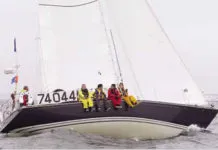
C&C 40 Used Boat Review
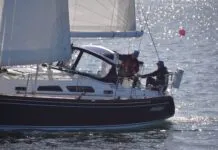
Sabre 386 Used Boat Review

How Does the Gulf Stream Influence our Weather?

Can You Run a Marine Air-Conditioner on Battery Power?

Preparing Yourself for Solo Sailing

Your New Feature-Packed VHF Radio

Practical Sailor Classic: The Load on Your Rode

Anchor Rodes for Smaller Sailboats

Ground Tackle Inspection Tips

Shoe Goo II Excels for Quick Sail Repairs

An Unusual Sailboat Shines a Light On A Sustainable Future

Is It Time to Get an Electric Dinghy Motor?
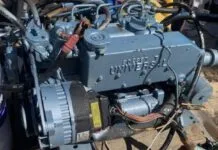
Worship Your Universal M-Series Diesel With the Marinized Kubota Block

Bottom Paint 30-Month Update

Battle of the Teak Cleaners — Snappy Teak-Nu vs. Star Brite

New Seacocks for the Offshore Sailor

Bottom Paint Care

Are E-bikes Worth the Extra Weight and Cost?

How to Handle the Head

How to Select Crew for a Passage or Delivery

Preparing A Boat to Sail Solo

Re-sealing the Seams on Waterproof Fabrics

Waxing and Polishing Your Boat

Reducing Engine Room Noise

Tricks and Tips to Forming Do-it-yourself Rigging Terminals

Marine Toilet Maintenance Tips

Learning to Live with Plastic Boat Bits
- Sailboat Reviews
Used Boat Review: Gulfstar 36
Pros and cons of 1980s-era vince lazzara fiberglass cruising boat..
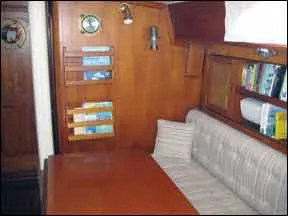
Gulfstar Yachts, which produced 2,500 boats in the 1970s and 1980s, was launched and managed by Vincent Lazzara. Lazzara was one of the early experts in fiberglass boat building, having been involved in constructing the Rhodes-designed Bounty II, one of the first fiberglass yachts.
In 1962, he founded and became part owner of Columbia Yachts, which grew into one of the largest fiberglass boat builders in the 60s. He served primarily as designer and marketer for the company, until it was sold to the Whittaker Corp. in 1967.
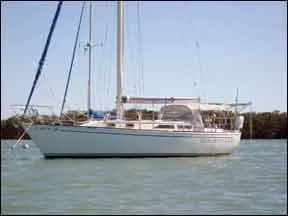
Photos by Ron Dwelle
Once his three-year non-compete agreement with Columbias new owners was satisfied, Lazzara established Gulfstar Yachts in 1970, in Tampa, Fla. The company joined a growing group of builders-including Morgan, Irwin, Hunter, and Endeavor-that were making Florida a center of American sailboat building in that decade. (Incidentally, at the same time, Frank Butler concluded a similar non-compete agreement with the Whittaker Corp. and founded Catalina Yachts.)
Lazzara began by building boats often described as low-cost, low-quality, floating condominium sailboat hulls that doubled as trawlers. His first boats were 36- and 53-footers. With identical hulls, the masted versions were called motorsailers, while the non-masted version, with a different deck mold and larger engine, were called trawlers. The sailboats had huge accommodations, but they established a reputation for sailing poorly with their shoal draft, short rigs, and wide beams. Other Gulfstars produced in the early 70s included a 43-foot trawler and 44-foot motorsailer.
In those early years, the Gulfstar boats were built conventionally, but many aspects were designed mainly to save money and produce inexpensive boats. For example, the interiors were full of formica and the ballast was iron pieces set in a concrete slurry.
Other problems had more to do with poor construction practices. The edges of the balsa-cored decks, for example, were not sealed with resin, and there were no backing plates for cleats or other hardware. According to a former yard hand, workers would cut holes in the decks and leave unfinished hulls out in the rain. One critic said that the workmanship in the factory during that time bordered on criminal. To this day, Gulfstars still suffer from the poor quality reputation they earned in the early 70s.
In the mid 70s, Lazzara foresaw changes in consumer tastes and began upgrading Gulfstar quality. Improvements included shifting from iron to lead ballast and using teak rather than formica on the interior. Within a few years, Gulfstar interiors were equal to the best production sailboats in the country, and factory construction practices improved to state-of-the-art.
This push for a new look and reputation led Lazzara to go outside for design, particularly calling on Ted Hood for the designs of the Gulfstar 40 and 48 performance sailboats. Lazzaras two sons, Richard and Brad, also joined the company, with Richard taking on some of the design work.
The changes were marked by one of the companys most famous designs, the Gulfstar 50. However, the company did not completely abandon motorsailers, and it continued to produce the shoal-draft, beamy Gulfstar Sailmaster series.
Lazzara was never one to follow the crowd. With the oil embargo in full swing during the mid 70s-when resins were expensive and in low supply-Lazzara tried a 50-percent glass-to-resin ratio, a practice that was unheard of at the time. Nowadays, this ratio is standard as makers strive to use the least amount of resin possible that will still totally wet-out the cloth. But back then, it was revolutionary, and Lazzara was criticized for it.
Still, many Gulfstars suffer from fiberglassing problems of this era, particularly a history of blister problems until the early 1980s. By then, the workmanship was as good as any other production manufacturer in the country. Gulfstar continued to produce fine teak interiors and performance-oriented sailboats such as the Gulfstar 44 and Gulfstar 60. Along with these sailboats, the company produced displacement motor yachts such as the 44 and 48 designs. In the mid 1980s, Gulfstars production shifted more toward powerboats. Many think that the best Gulfstar sailboat was the 54 Sail Cruiser whose interior joiner work, good design, and quality construction is about the opposite of Gulfstars early days. The early and mid 80s are now generally considered Gulfstars Golden Era.
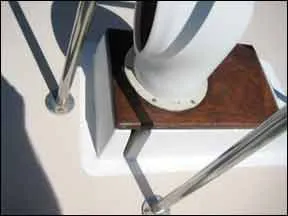
In the late 1980s, Gulfstar built mostly larger motor yachts, but the company still produced interesting sailboats, including some for the CSY charter fleet, including the 50, 45 Hirsch, and the 42.
For years, Gulfstar discussed a merger with Vikings Yachts, a powerboat builder, and finally in 1990, the company was sold to Viking Yachts. Lazzaras sons moved on to found Lazzara Yachts, a mega-yacht builder that still builds boats out of the Tampa Bay area.
Currently, there are two Gulfstar owners websites, but neither have been active recently.
The Gulfstar 36
The Gulfstar 36, also called the 36 Auxiliary, was the smallest boat the company built in the 1980s. Twenty-three of the boats were built between 1983 and 1985. Overall, its design is conservatively traditional-it was never called a racer-cruiser, but it was similar to many popular racer-cruisers and coastal cruisers of the time, with modest overhangs, a longish waterline, a moderately long fin keel that is 4 feet, 10 inches deep, and a skeg-hung rudder. The designers are listed as R.C. Lazzara and David Jones.
Above the waterline, the deck has a minimal sheer and the coachroof is attractive, with a sloping front edge. The four cowl-vents on the cabintop have sturdy stainless-steel guards. A dodger and bimini were not standard on the boat, and there are many variations of that equipment on Gulfstar 36s around today.
The cockpit is large and roomy, though you have to step up onto the seats to get by the wheel. The cockpit is 90 inches long, and the seats have good, high back support. A propane locker for two 10-pound tanks is at the aft end of the cockpit. Theres a deep lazarette locker on the port side and a shallow one to starboard.
Sidedecks are wide, but its a squeeze getting by the upper and aft shrouds. The foredeck is clear, with a good-sized anchor locker and a short stainless sprit for carrying a plow-type anchor. Our test boat had a 33-pound Delta on the sprit, and the anchor locker was large enough to carry a 33-pound Bruce in addition to the anchor rode. A Danforth hangs on the stern pushpit.
A good bow pulpit and double, 27-inch-high lifelines (with two gates just ahead of the cockpit) are standard, and a stern ladder folds down from the stern pushpit. The stern is wide enough to handle dinghy davits, which our test boat was equipped with.
Construction of the 36 is conventional and of good quality, with standard hand-layup roving and mat. (Early Gulfstars were famous for using the chopper gun for layup, but the later models abandoned that method.) Displacement is 14,250 pounds, with 5,460 pounds of lead encapsulated in fiberglass in the keel, for a ballast/displacement ratio of 38 percent.

A couple of peculiarities of construction-the deck is supposedly balsa-cored, but drilled holes and a larger cut-out in the cockpit revealed a marine-grade plywood core. Were not sure there is any balsa in the deck, and the notable lack of any delamination in a 28-year-old boat suggests that it may be all plywood cored, in spite of the companys information.
Inside the boat, the hull is totally lined with teak-veneer plywood, so its difficult to inspect the hull itself. The deck has a conventional L flange that is glassed and fastened to the hull through the exterior rubrail, and the bulkheads are well-glassed where they are viewable.
The rig is a conventional, single-spreader, masthead sloop, keel-stepped, with a nominal sail area of 608 square feet. A 135- to 140-percent roller genoa was pretty standard. Sail area to displacement ratio is a moderate 16.61, an indication that the boat is a good but not spectacular sailer. The only unusual thing about the rig is that the aft lower shrouds go to the same chainplate as the upper shrouds.
Our test boat had a Hood jib furler and originally had a Hood roller-furling boom, which the owner had scrapped because of difficulties raising and lowering the main. The boat now has a conventional main with a lazyjack handling system. There were many variations and changes in the Gulfstar 36 rigging over the years. The rig should be examined carefully by a purchaser for saltwater corrosion in the fittings.
Original hardware on the boat was good quality with the standard equipment being pretty complete, though spinnaker gear was not included in the original specs. The Barient 27 sheet winches and the Barient 22 mast and mainsheet winches are two-speed self-tailers and still very serviceable after 28 years. The wheel is a Merriman, as were the original traveller, tracks, and blocks. To be expected in an older boat, many minor changes will have been made to the boats hardware over the years.
Almost all the Gulfstars used Perkins diesels, and the 36 has a 4-108, plenty powerful for the boat-quite a bit noisier than more-recent diesels. The 36 we tested had 8,000 hours on the engine, and some 36s may be due for overhauls or engine replacement. The engine compartment is large enough to handle all current 30- to 45-horsepower engines. The 1-inch shaft uses a conventional strut, and the test boat had a big three-blade propeller, which doesn’t help sailing performance. A PYI shaft seal had been retrofitted.
Access to the front of the engine is good, with the cabin steps removed, but getting behind the engine is almost impossible through the cockpit-locker access hatch if youre taller than 4 feet or heavier than 90 pounds. But access is necessary to get at the transmission, shaft seal, battery charger, water heater, water-lift muffler, steering gear, and so on. On our test boat, the owner had taken the extreme step of cutting a large access hatch in the cockpit sole. Fuel tankage is 40 gallons, plenty for normal coastal cruising.
The electrical system was originally well done, with wiring well-labelled and bundled. As expected, many modifications have been made, and the electrical panel is small for the current electric and electronic demands aboard mid-size cruising boats. Breakers for both 12-volt and the shore-power system are standard. The battery tray in the cockpit locker has room for only two batteries, and our test boat had added another battery tray behind the engine.
One odd thing on our test boat is that the boat had no running lights for running under power (red/green bow, stern white, mast forward white), and obviously had never had any-there were no fittings and no wiring for these lights on the boat. Its hard to imagine how a 28-year-old boat could get by without legal running lights, but there were none-the running lights switch on the electrical panel turned on just a masthead tricolor light for sailing. There is also a masthead anchor light.
An electric bilge pump and cockpit Whale hand pump are adequate for de-watering.
Accommodations
The interior of the boat is roomy, comparable to other spacious cruisers of the era, like the Catalina 36. The arrangement, again, is conventional.
A large quarter berth is aft to starboard, with a small nav station at the head of the berth. Opposite is a U-shaped galley that came standard with a two-burner Shipmate propane stove and Adler-Barbour-powered cooler, plus a double sink and ample dry storage. Counter-top space is minimal but adequate, and there are six small storage lockers outboard and behind the galley.
Next forward are port and starboard settees; the starboard one pulls out to form a sleeping-double. There is some storage behind and above the settees, and two 40-gallon water tanks are underneath. An oversize table occupies the center of the boat.
Gulfstar, even in 1984, seemed to subscribe to the foolish idea that a 36-foot cruiser could live and sleep six or seven people. A couple using the boat will likely convert the large quarter berth to storage.
Next forward are hanging and storage lockers to port and a large head with separate shower stall to starboard. Finally forward is a large V-berth, 78 inches long, 78 inches wide at the head, and 28 inches wide at the foot. Storage and a holding tank are underneath the berth, and a storage forepeak is ahead of the V-berth, underneath the anchor locker.
Joiner work below is teak and teak-faced plywood and generally well done. Four opening ports along with two overhead hatches and four dorades provide adequate ventilation. Ports in the main cabin provide ample light inside and decent views.
Performance
The Gulfstar 36 is an adequate sailor-not super fast, but not a dog. US Sailing doesn’t list a PHRF rating for the boat-they require three or more boats to have been rated in the previous five years, and there obviously were none being raced. An older single PHRF rating was 144, which we found may be optimistic. We doubt if anyone would want to buy the boat as a club racer. It sails like a cruising boat-probably not as fast as the newer, lighter-weight boats.
The boat will go to weather decently-even with an age-challenged main and 140-percent jib, it easily tacks through 90 degrees and achieves hull speed in 12 to 14 knots of wind.
The helm is well balanced. Reaching and off the wind, the boat is easy on helm and sails comfortably. The big three-blade prop obviously slows the boat down, and a good feathering prop would be a desirable addition. As is, cruisers are likely to turn on the engine when the wind drops below 6 to 8 knots.
Under power, the big Perkins diesel easily drives the boat to hull speed, even in a strong head wind. Handling under power is straightforward in both forward and reverse, with little pull on the helm and with just enough prop walk to kick the stern a bit in tight quarters. As with everything else on the boat, performance of the Gulfstar 36 is moderate.
With few models of the Gulfstars available at any one time, cost of a used Gulfstar 36 is hard to specify. More of the larger Gulfstar models seem to be available at any given time. PS could find only two 36s for sale at presstime, priced at $39,500 and $44,000. Actual selling price will depend on condition and equipment, and most used boats of this age will need some upgrading. As the cost approaches $30,000, we think that a Gulfstar 36 in decent condition would be a good value for a conservative cruising boat.
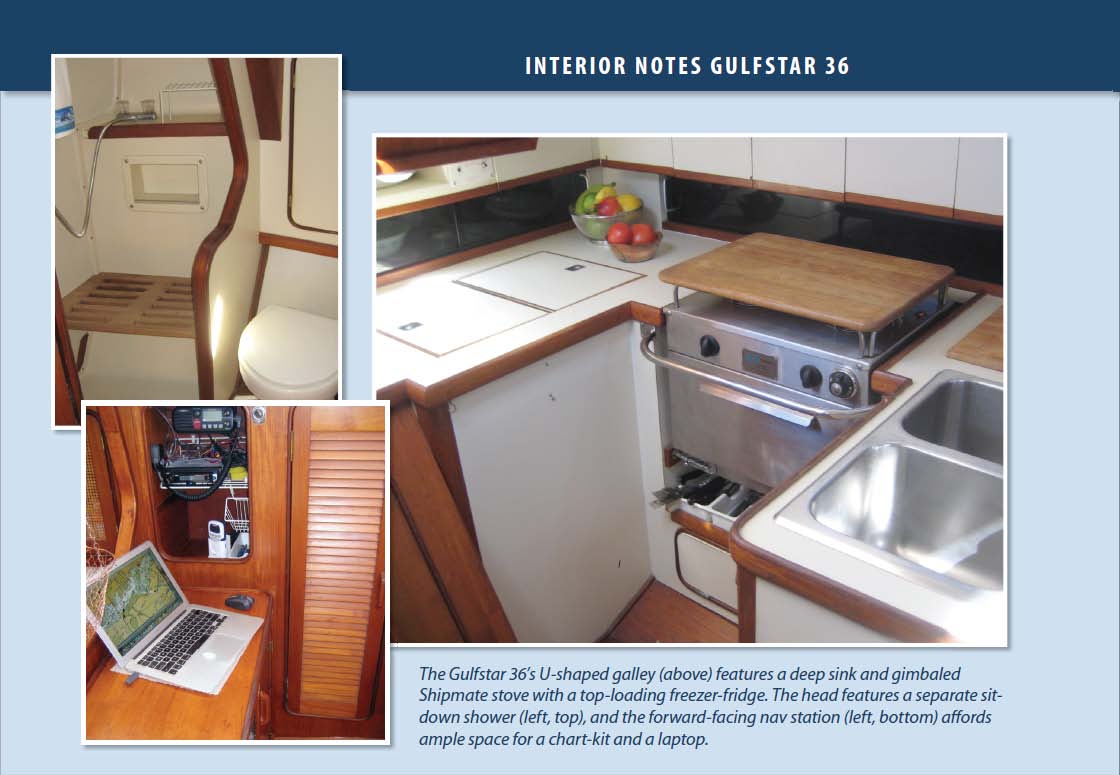
- GulfStar Owners
- GulfStar Owners Club
RELATED ARTICLES MORE FROM AUTHOR
Excellent Report and very Professional !!!
I am looking at a 1974 Gulfstar 41′. The condition seems very good and it has been cared for asking 49k. My concern is the backing plates and other shortcuts the builder used or is stated to use in a few articles I have read.
Any thougts on this year boat or should I move on to a different brand of boat?
LEAVE A REPLY Cancel reply
Log in to leave a comment
Latest Videos
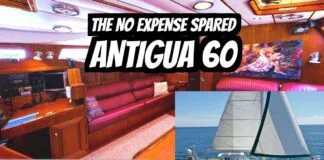
The No Expense Spared Antigua 60 Cruising Sailboat Soolaimon

How To Buy Sails – With Joe Cooper

Bavaria C42: What You Should Know | Boat Tour

Universal Diesel Engines – What You Should Know
- Privacy Policy
- Do Not Sell My Personal Information
- Online Account Activation
- Privacy Manager
- Ray Hunt and Richard Fisher collaborate on 13ft model
- Who was Ray Hunt?
- 13 ft models
- 15 ft models
- 16 ft models
- Restoration of 1987 17ft Sport
- 18 ft Outrage
- 19 Outrage 1990 and 1991
- 20 ft Outrage
- 20 ft Revenge
- 21 ft Outrage
- 21 ft Revenge
- 22 ft Outrage
- Analysis Explained
- Les Cheneaux 2016 whaler hunt
- Les Cheneaux 2020 whaler hunt
- Voyage of SV Pebbles
- SV Pebbles Project Status
- Gulfstar 50 Design
- Gulfstar 50 1977 Blueprints
- Gulfstar 50 Sloop for sale
- Outboard Manuals
172 Gulfstar 50 sailboats produced from 1975 to 1980
May 4, 2010, gulfstar yachts review: a complicated history.
Filed under: Reviews — Tags: Caribbean Sailing Yachts (CSY) , Columbia Yachts , Gulfstar Yachts , Vincent Lazzara — Richard Jordan @ 1:32 pm
Gulfstar Early Model Star Logo
Gulfstar Yachts was founded in 1970 by Vincent Lazzara in Tampa Bay, Florida. Mr. Lazzara was fresh off a two year forced absence from the power and sailboat building business. As part of selling his share in Columbia Yachts, he signed a non-compete clause and boded his time building houseboats. In 1970, Mr. Lazzara was already a legendary figure who had invented a snap-shackle variation, helped build one of the first fiberglass sailboats in the Rhodes designed Bounty II, and was involved with Columbia Yachts which was one of the leading early builders of fiberglass sailboats. But, his greatest legacy was to be Gulfstar Yachts.
The Gulfstar Story
Mr. Lazzara drawing on his experience decided to produce sailboat hulls that could double as trawlers. With a different deck mold and larger engine, Gulfstar delivered 53 and 36-foot trawlers while by stepping a mast, they had 53 and 36 motorsailers. He tapped into the floating condominium mentality of the public and built exactly what would sell. The sailboats had great accommodation but poor performance with their shoal draft, short rigs, and wide beam. Other boats produced during this era include a 43 trawler and 44 motorsailer.
While Mr. Lazzara was experienced in boat building, his crew at the Tampa Bay factory were not. In the early Gulfstar years, the workmanship bordered on criminal. Some choices were made to save money and produce boats inexpensively. The interiors were full of Formica. The ballast was iron in concrete slurry. But other problems had less to do with philosophy and more to do with poor practices. The balsa cored decks did not have solid radii of glass around deck hardware and were not sealed with resin either. They did not use backing plates for cleats. Workmen according to a former yard hand would carelessly cut holes in the deck and leave unfinished hulls out in the rain. Gulfstars still to this day cannot shake the poor quality reputation from their mistakes made in the early 1970’s.
Around 1975, Mr. Lazzara felt that consumer tastes were changing. Instead of beamy motorsailers, high performance yachts were coming into vogue. Gulfstar would have to evolve. They introduced a 50-foot high performance sailboat that would become one of their most famous designs, the Gulfstar 50 . It was an era of evolution where they shifted from iron to lead ballast and Formica to classic dark teak interiors. They even changed their logo from a star to a wreath.
Gulfstar Late Model Wreath Logo
By 1978, the workmanship had significantly improved. They patented a process and developed a special plywood to camber edges. All the bulkheads they nicely laminated, all the corners nicely radiused. The joinery work would slowly rival the best in the industry. They did not go completely away from motorsailers and still produced some poor performing shoal draft, short rig, beamy motorsailers like the Gulfstar 47 Sailmaster series. But all their models in the late 1970’s had much better quality construction than the early 1970’s versions.
1979 Gulfstar 47 Sailmaster
Gulfstar Yachts and all builders during this era had to grapple with the oil embargo and low supply of resin. To save resin, Mr. Lazzara used a 50% glass to resin ratio which was unheard of in those days. These days this ratio is standard as we have found out that the glass not resin rich laminate holds the strength. Despite this innovation, the discovery came along with serious growing pains, and many Gulfstars of this era have had blister problems. Whether due to their fluctuating resin ratios, the chopper gun, or the lack of vinylester resins, Gulfstars in this era until the mid 1980’s have a history of blister problems.
In the late 1970’s and early 1980’s, Vincent Lazzara’s two sons became involved in the company. R.C. Lazzara started designing the Gulfstar yachts of this era. By the 1980’s, the workmanship was as good or better than any other manufacturer out there. They continued to produce fine teak interiors and performance oriented sailboats such as the Gulfstar 44 and Gulfstar 60 designs. Along with these sailboats, they produced displacement motor yachts such as the 44 and 48 designs.
As they progressed into the mid 1980’s, their production shifted towards powerboats and away from the performance sailboats. The sons were more power boat guys. Maybe the height of their sailboat skill is the 54 Sail Cruiser whose stunning interior joiner work, soft ride, and quality construction is about the opposite of Gulfstar’s early days. In the late 1980’s, Gulfstar moved mostly to motor yachts. They still produced some interesting sailboats including some for the CSY charter fleet such as the 50, 45 Hirsch, and 42. They for years discussed a merger with Vikings Yachts, a power boat builder. Finally in 1990, Gulfstar sold its assets to Viking Yachts. The sons moved onto found Lazzara Yachts, a current mega-yacht builder in the Tampa Bay area.
January 27, 2010
Gulfstar 50 review: affordable three stateroom classic.
Filed under: Reviews — Tags: Gulfstar 50 , John Kretchmer , Vince Lazzara — Richard Jordan @ 1:22 pm
The Gulfstar 50 is one of Lazzara’s best designs. Lazzara previously was a partner at Columbia yachts who produced another well know 50-footer, the Columbia 50. The Gulfstar 50 is a lot of boat for under $200,000 these days and attracts a certain degree of interest. The combination of a 50 foot boat with a three stateroom layout for sometimes below $100,000 is one of those golden combination in a brokerage boat. There are always a large number of clients looking for a 50-foot boat for around $100,000. Gulfstar has a confusing reputation. Ask some people and they’ll lambast the builder for shoddy layup and bathtub designs. Ask others, and they’ll praise the skill and quality of Gulfstar. This inconsistency is a facet of the diametric divisions in Gulfstar’s history. For the first five years in 1970-1975, they built cheap, floating bathtubs. If you wanted a sailboat, they would step a mast. In the late 1970’s, Vince Lazzara jibed and produced high-quality, performance sailboats. These performance yachts include the 50 along with the 60 and 44.
Gulfstar 50
First Impressions With her teak caprail, long fine lines, and just the right touches of chrome, she is a boat many a client has fallen in love and had to check the hard reality of their bank account. The cabin trunk is streamlined with not too much height. She has a slightly spoon, raked bow with a sweet sheer and lovely counter stern. It is a design that has proven time and still keeps a modern look with it’s classic teak touches. You find sloop and ketch rigs on these centercockpit cruisers.
Construction
The 50 Gulfstar straddles the Gulfstar build lines. For instance, early on they used a star logo while later switching to a wreath shape. Some Gulfstar 50’s feature a star-wreath combination logo. In the early years, I have unconfirmed reports of iron ballast while later ones definitely have lead. This iron-lead choice is a primary division in quality. Lead is superior in density and corrosion resistance, but iron is less expensive. This change highlights the concerted effort of Gulfstar to improve the build quality. The tankage was set low in the bilge over the keel cavity so it is difficult to inspect the area. Another change was a switch from Formica to teak veneer interiors. They patented a special plywood for construction. You can see the quality with nicely radiused corners, cambered edges, and laminate. Gulfstar 50’s have dark teak interiors that rival the best workmanship of any manufacturer. The hull is solid glass. Because of the oil embargo, Gulfstar was experimenting lower than usual glass-resin ratios. While the learning curve had issues shown by the blister pox of all manufacturers during this era, essentially Gulfstar was right. Lazzara’s insistence on a low for the 50% glass-resin ratio is now the normal ratio for building yachts. Reports are that a few late model 50’s had balsa cored hulls. The decks are balsa cored and attached with the standard lip flange.
Gulfstar 50 Saloon What to Look For
Most of the 50 Gulfstars were Caribbean charter boats. You will see quite a difference between the two stratas of 50’s, and it’s a real difference in all the ways you can and cannot see. Another note is that these are becoming unlikely financing candidates. Banks prefer not to finance boats older than 25 years of age. And because of Gulfstar’s confusing reputation, banks will hesitate to finance the brand. Unless you have a Bristol survey and perfect credit, financing a Gulfstar 50 is unlikely.
Gulfstar 50 Cockpit On Deck and Down Below
The 50 comes in both 2 and 3 staterooms designs. These may correlate to the Mark I and II versions though noone seems to know the difference. The three stateroom design is more attractive with a V-berth forward, starboardside bunk beds, and large aft stateroom. The two staterooms have an enlarged engine room and navigation station area. One couple I met mentioned how steep the companionway is as you come down. The freeboard leads to 6’6″ headroom albeit the cockpit sole lowers the portside walkthrough. You will see the cockpit sole lower deep into the walkthrough on most Gulfstars. Because the cockpit is sunken into the hull lines giving that low slung look, the walkthrough headroom is restricted to 5’6″. I am 6’0″ and really have to crouch down to pass through the walkway. A pair of overhead handles in the companionway-saloon would help for safety offshore.
Gulfstar 50 Layout (Three Stateroom) Engine and Underway
These have great Perkins engines originally. The access is from behind the companionway and also along the walkthrough. Some were surprisingly underpowered with a 65HP Perkins while others had a 85HP model. The fuel tank is in the bilge of fiberglass or stainless steel in front of the engine. The engine room has a cute little portholed door with the teak cambered top. Being a 35,000 pound displacement boat, she really can be a lot to handle for a newbie couple. Docking will be the biggest problem, and I would recommend a bow thruster which would run about $8,000 to ease the difficulty.
Gulfstar 50 Sloop
With a fin keel and skeg rudder, she has a modern underbody and will surprise you. One broker mentioned his experiences. “I owned a 57 Nautor Swan and a friend a 50 Gulfstar. One day it was really blowing, and nobody could stay out there except me and my friend on his 50 Gulfstar. With a Swan is saying something. And he was right with me the whole time. That’s when I realized these are great boats. I really like them.” The Gulfstar 50 is heavy displacement cruiser and can sail amongst the best.
After producing the 50 in the late 1970’s and early 1980’s, Gulfstar moved on to motor sailors and powerboats again. In the very end, they produced charter boats like the Gulfstar 50 CSY (a wholly different design) with Formica interiors. The sons were powerboat guys and did not do well with Gulfstar. Gulfstar shutdown in the late 1980’s. They successfully moved on to found the megayacht company Lazzara Yachts in the Tampa Bay area. The 50 Gulfstar remains, perhaps, Vince Lazzara’s greatest legacy to the sailing world – the inspiration for the Stevens / Hylas 47. You will find these for between $75,000 and $150,000 in varying condition.
Original advertisement from June 1974 Sail Magazine page 6.
A 50' boat with a 5' 6" draft and 55' bridge clearance could be sailed/motored up and down the ICW. The 13' 8" beam allowed the boat to be shipped by truck across the country without the extra wide support vehicle in most states.
GULFSTAR 50: An Affordable Big Boat
10Jun Posted by Charles Doane
Gulfstar Yachts was founded in 1970 by Vince Lazzara, an industry pioneer who in the early 1950s helped make a success of Aeromarine, one of the very first fiberglass boatbuilders. In the early 1960s he did the same at Columbia Yachts, which became the world’s biggest sailboat builder in its day. Early on Gulfstar emphasized low price and maximum interior space over build quality and sailing ability, but in the mid-1970s the company shifted gears and worked to deliver a more high-end product. The most notable manifestation of this was the Gulfstar 50, a large center-cockpit cruiser first introduced in 1975. The GS 50 was the best boat Gulfstar ever built and also the most popular, with 172 hulls launched during a six-year production run that ended in 1980. Designed by Lazzara himself, the GS 50 boasts superior interior joinery, generous accommodations, robust construction, and a well proportioned hull and rig. These days it is one of the best values on the brokerage market in a larger center-cockpit boat.
Though better built than most Gulfstars, the GS 50 is not without its faults. Construction is simple and straightforward, with a solid hull laminate composed of multiple layers of mat and woven roving. (Note, however, a few hulls may be cored with balsa.) The hull is stiffened, not with liners, but with full bulkheads and furniture components that are tabbed in place. The deck is balsa-cored, with a through-bolted joint glassed over from below. The full-length rudder skeg is also bolted in place. The ballast, which consists of lead chunks embedded in concrete slurry, is encapsulated within the long fin keel.
Problems over the years have included hull blisters, which normally are just cosmetic, but in some cases have involved saturated cavities surrounding the ballast. These must be drained and flushed before they are filled in. The mainmast step, an iron plate in the bilge directly over the keel, is subject to corrosion, while the mizzen step on ketch-rigged boats may have crushed the deck core beneath it. Leaking deck fixtures, hatches, and port windows are other common complaints. In some boats the bronze stern tube housing the rudderstock may eventually separate from the surrounding hull laminate and must then be rebonded in place. There have also been reports of loose tabs around bulkheads and sub-floor structures that also need rebonding. The good news is that many owners value their GS 50s enough that they are willing to make repairs. Well-maintained boats are not hard to find; boats in poor condition are priced accordingly and normally are worthy of reconstruction.
For most owners the boat’s most attractive feature is its interior. The more popular layout, originally developed for the charter trade, features three staterooms and works very well for families. The master stateroom aft with an en suite head and separate shower boasts an enormous U-shaped double berth with enough space for a couple to sleep together athwartship while in harbor or separately in lateral positions while at sea. The forward stateroom, which shares a head with the saloon, has a large V-berth that fills in to form a double, and the third stateroom, midship to starboard, has two single bunks with yet another small en suite head. The L-shaped galley runs down the walk-through alley under the center cockpit to port, with twin sinks close enough to the centerline to drain on either tack. The saloon has a dinette to port and a settee plus a pilot berth to starboard. In the two-stateroom layout, which is more appropriate for a cruising couple entertaining occasional guests, instead of the midship stateroom there is a fabulous wrap-around nav station and expanded engine space beneath the cockpit.
In a seaway the GS 50 is very well mannered. Its forefoot has enough bite and its bilges are deep enough that it does not slam much in a chop. It is relatively narrow with a moderate hull form and does not gripe when sailing to weather. All tanks are below the floorboards, which keeps the center of gravity low, sweetens the motion, and also creates extra storage space under berths and settees.
The sail plan is not particularly large, in either the ketch or sloop configurations, and I would advise against a roller-furling mainsail if you value sailing performance. A number of GS 50s were fitted with early after-market behind-the-mast mainsail furlers and these in particular should be avoided or quickly replaced. Sheeting angles are not very narrow, as the mast spreaders are wide and the chainplates are set nearly all the way outboard. Most owners report the boat will not sail well to windward unless the apparent wind angle is 45 degrees or greater.
Still, the GS 50 is not exactly a slouch when it comes to speed, though it does like moderate to heavy weather better than the light stuff. It’s not hard to keep the boat moving at 7 knots or better under working sail if the wind is blowing over 12 knots; below that you’ll need to break out spinnakers and mizzen staysails to maintain good speed.
If you like to motorsail, bear in mind the original engine on most GS 50s was a 62-hp Perkins diesel which, though reliable, is not quite powerful enough to push the boat hard into a head sea. Later on an 85-hp Perkins engine was offered as an option and this does a much better job of driving the boat to speed. Several boats now on the market have been repowered–turbo-charged Yanmar diesels seem to be a popular replacement engine–and these may command a significant premium.
The standard fuel capacity, 100 gallons, is a bit low for a boat this size, so if you plan to do some long-range cruising you may want to carry some jerry jugs on deck or expand capacity a bit. The fuel tank is quite low in the boat, which forces the engine’s fuel pump to work hard, so adding a day tank higher in the boat with an effective transfer link to the main tank would be an excellent upgrade. Many GS 50s were delivered new with Onan generators installed. These are notorious troublemakers (on one boat I once cruised aboard we referred to ours as Onan the Barbarian) and should probably be replaced sooner rather than later.
Specifications
LOA: 50’0″ LWL: 39’8″ Beam: 13’8″ Draft: 6’0″ Ballast: 10,500 lbs. Displacement: 35,000 lbs. Sail area -Sloop: 895 sq.ft. -Ketch: 963 sq.ft. Fuel: 100 gal. Water: 210 gal. D/L ratio: 250 SA/D ratio -Sloop: 13.35 -Ketch: 14.37 Comfort ratio: 38.56 Capsize screening: 1.67 Nominal hull speed: 9.3 knots Typical asking prices: $60K-220K
Who designed the Gulfstar 50 ? Vince Lazzara is seen here with sons Brad on the left and Dick to the right.
Vince was born and raised in Chicago and spent his summers on the waterfront where he built small boats and sailed on Lake Michigan. Following service in World War II, he studied mechanical and industrial engineering at the University of Illinois. After college he got a job at a foundry that made casting for the airplane industry. A year later he started his own company, Casting Engineers and supplied the same airplane customers. On the side he made deck hardware for boatbuilders. He is credited with developing the first stainless snap shackle. In 1952 he sold his foundry business and started building fiberglass boats against the advice of his friends Henry Hinckley and Chris-Craft's Bill MacKerer.
Beginning with Coleman Plastics he helped develop the Bounty II sailboat. Vince and his 2 partners renamed the company Aeromarine. After selling Aeromarine to Grumann, he bought control in Glass Marine Industries and renamed the company Columbia in 1960 after the twelve meter America Cup. Vince sold Columbia Yachts in 1967 to Whittaker and signed a 3 year non compete clause. So from 1967 to 1970 he began a company called Sea Rover and built houseboats. In 1971 he founded Gulfstar.
“Columbia presently has one of the largest networks of foreign licensees of any U. S. boatbuilder, Columbia models are now produced in Canada, Australia, Japan, and Spain. Columbia’s impressive record of race wins and its sizeable group of satisfied and enthusiastic owners tells the rest of Columbia’s history.”
Interestingly, this document fails to mention Vince Lazzara who, in 1960, bought controlling interest in Dick Valdes and Maurice Threinen’s Glass Marine Industries after selling AeroMarine to Grumman. Lazzara renamed the company Columbia Yacht Corporation, after the America’s Cup Twelve Meter. He bought the molds of Charley Morgan’s Sabre , which had nearly won the 1964 SORC. It became the prototype of the Columbia 40, which sold well for the new company. And Morgan’s 28-foot Tiger Cub, which had been built “essentially as one-offs,” became the Columbia 31.
Lazzara called Valdes and Threinen “two good fiberglass boys in their early twenties. My main contribution was financial and establishing the dealership organization—I became the distributor for the whole United States. But I was also involved in manufacturing, models, some design…I guess that’s about it.” When the Whittaker Corporation bought Columbia Yachts in 1967, Lazzara was forced to sign a three-year, no-compete contract, but the agreement applied only to certain kinds of boats. By then living in St. Petersburg, Florida, Lazzara quickly established a new company called Sea Rover to build fiberglass houseboats, which he sold two and a half years later to Apeco. Then, when Apeco went bankrupt, he bought back the molds and resold them to a Kansan who produced them under the name Holiday Mansion. In 1971, he formed Gulfstar. The first boat it produced was a 36-foot motor-sailer. In 1973 it built the Gulfstar 41 center-cockpit sailboat and in the next year began private labeling boats for others, including yachts for charter companies that included CSY, Bill Stevens, the Moorings, La Vida, and Bahamas Yachting Services. Gulfstar added motor yachts to the lineup in 1977 and ten years later, three years after the sailboat market “went to pot,” ceased building sailboats altogether. That same year, Gulfstar merged with motor yacht manufacturer Viking to form Viking-Gulfstar. Meanwhile, Whittaker had unloaded some of the Columbia molds to a Canadian company called Aura in Huron Park, Ontario, in 1984. The sale was prompted, no doubt, by the same slow market that convinced Lazzara to quit building sailboats. Aura built only the latest Columbia designs—the Columbia7.6, 8.7, 10.7, and the 35-footer designed by Australian America’s Cup designer Alan Payne (as well as the Hughes 35 and 40 it had picked up from Hughes Boat Works, a division of North Start Yachts in the same Canadian city). But not for long. Its last year was 1986. The other Columbia molds were in different directions, including to P&M Worldwide of Costa Mesa (later Worldcruiser Yachts), which tried selling a number of discontinued models that reads like the membership of a hall of fame for production fiberglass cruising sailboats; John Letcher’s Aleutka 26, the Westsail 32, the Ericson Cruising 36, the Westsail 39, and the lovely Columbia 50.
By the mid-1980s, the last reverberations of the Columbia name were silent. The giant was dead, slain by the fickle boating business.
Web View Mobile View

Jordan Yacht Brokerage
We Never Underestimate Your Dreams
Gulfstar 39 sailmaster review: cruising couple dreamboat.
When introduced in 1981, the Gulfstar 39 Sailmaster was a controversial design because of her single stateroom interior layout. Most aft cockpit sailboats of her day featured a quarter berth. These days you often see twin berths aft as manufacturers maximize sleeping accommodations. From a sailor’s perspective the G39’s accommodations make a good deal of sense. Quarterberths tend to turn into garages packed with all sorts of useless cruising junk. The elimination of that area forces you to keep a tidy ship. And as everyone finds out the best sleeping berths are at the center of yaw, pitch, and roll — the salon settees. In 1982, Gulfstar introduced a Mark II version with a portside quarter berth instead of the office area and deep cockpit locker. According to the Gulfstar Owner’s Club, all told they produced around 60 hulls (some cite 57 hulls) of the Sailmaster 39 over the two year production run. Then using the same hull as the 39SM but with a center cockpit arrangement, Gulfstar made a dozen Moorings charter boats and branded them Gulfstar 40 Sailmasters. Let’s take a look at the features of this well respected model.
First Impressions Like her Sailmaster sisters, the 39 has large doghouse windows which distinguish her dockside profile. Vince Lazzara’s son, Richard C. Lazzara, designed her and did an excellent job balancing performance and liveability. The family now builds Lazzara megayachts over in Saint Petersburg after selling the assets of Gulfstar to Viking Yachts in the 1990. Her 4′ 9″ draft allows her to access anywhere in the Bahamas and eastern Keys without fear while her 53′ 5″ bridge clearance allows the crew to motor up the Intra-coastal when foul weather slops up the sea. She has two portholes in her topsides on each side providing even more light inside. Her raked bow leads to a slight sheer and flat transom aft. Underneath she features a long fin keel and skeg hung rudder arrangement.
Construction and What to Look For The Gulfstar 39 was built during Gulfstar’s golden era and has top quality construction. Many times clients unduly worry about Gulfstar because of the inexpensive yachts they mass produced during the early 1970’s and their charter boats of the late 1980’s. During the late 1970’s and early 1980’s, their yachts rivalled the finest in the world. For example they patented a special process to camber corners on interior woodwork. They switched from Formica to teak interiors, iron to lead ballast. Above and below, the 39 has flawless glasswork, gorgeous teak appointments, and high quality hardware. The hull has balsa cored topsides and deck, encapsulated lead ballast of 8,200 pounds, and a 53′ tall keel stepped mast. On paper, her ballast to displacement ratio is an impressive 43%. The biggest and most common owner complaint is of leaks around the doghouse windows and portholes. The original ports and hatches were aluminium ones by Atkins and Doyle. Carefully inspect the veneer for water damage. It is not an easy job to match the exact shade of Gulfstar’s dark teak veneer. A second item of note is the blister pox of the 1980’s which hit all US manufacturers including Gulfstar.
On Deck The bow has good space where you could stow your dinghy. Then the cabin trunk rises with a centerline hatch and two stainless dorades. Teak handrails with give you security when in your safety harness and going forward in a blow. Teak eyebrows decorate her trunk lines. Two more hatches populate the coach roof where the mid-boom sheeting traveller sits. Here tall stanchions keep you on deck. In the aft cockpit, she has wide teak combings, a centerline pedestal, and cockpit table. The benches are long enough to lay down along while the helm is fully aft.
Down Below Down below bathed in dark teak is a light and airy interior. Both the single stateroom and quarterberth layouts have an aft facing navigation station starboardside, an L-shaped dinette, and a straight settee before the sole steps down. There is a unique pantry underneath the step down which hydraulic raises for dry good storage. The settees pull out to make double berths for people who like each other. Forward is the galley along the portside, the starboard master head, and finally V-berth forward. The forward galley is an unusual feature and opens up the salon. Chainlocker access is available through the forepeak. The single head has a separate stall shower, one of those sometimes overlooked features that is important for cruising comfort. The interior does seem to be that of a larger yacht. Storage is everywhere. The single stateroom version has a handy office area portside while Mark II versions have the previously mentioned quarter berth arrangement. You will be amazed how handholds are where ever you need them.
Engine and Underway The original engine on these yachts was the ubiquitous 50HP Perkins 4-108. There is room for a generator as well under the cockpit. Engine access is through the cockpit sole and behind the companionway with easy access to filters. Under sail, 39’s are known to have cruised the Caribbean extensively and no doubt beyond. I have not had the pleasure of delivering one, but by her looks I would not hesitate to hop aboard a 39 Sailmaster in good condition and go anywhere. Sailing her would be easy with visibility from inside sitting on the companionway steps and steering via autopilot controls at the nav station. One owner writes on Bill Dietrich’s excellent website about his experiences in the Pacific Northwest aboard a 39 SM:
We don’t put many miles on this boat. The Perkins 4-108 has just over 1200 hrs. and has only had fuel and oil servicing. The helm balances very well — on the wind (10-20K) we can leave it alone if the seas aren’t up. I rarely put in a reef because the winds are seldom above 15-20K here on Puget Sound in the summer. It’s tough to get the rail in the water without starting to worry about the sails but I have done it on Lake Washington — knotmeter hit 9.6 which was probably pretty close. We power at 2000-2200 RPM at 6.2 to 6.8 K, no wind, with a three-blade, 18″ prop.
Conclusion The Gulfstar 39 is from the golden era of Gulfstar with her solid layup, beautiful teak craftsmanship, and solid performance. They made quite a few during the two years of construction, so there is usually one of two available on the brokerage market. Previous sales show valuations maxing out at $100,000. The 39 is a sweet boat and would be an excellent choice for a cruising couple.
References http://www.cruisersforum.com/forums/f2/gulfstar-39-sailmaster-1778.html http://billdietrich.byethost8.com/BoatModelGulfstar.html#Gulfstar39 http://www.gulfstarownersclub.com/whereRthey.php
Leave a Reply
Your email address will not be published. Required fields are marked *
Save my name, email, and website in this browser for the next time I comment.

- David Pascoe
- All Articles (over 180)
- Mid Size Power Boats
- Buyers' Guide to Outboard Boats
- Surveying Fiberglass Power Boats (2E)
- Marine Investigations
- Domestic (USA)
- International
- Privacy Policy
- All Articles
- Order Books

- Boat Reviews
- Buying a Boat
- Cores & Structural Issues
- Marine Engines
- Maintenance & Repairs
- Hull Blisters
- Marine Surveying
- Insurance Issues
- Boat Handling & Boat Safety
- Hurricane Preparations
- Fuel Issues

Read Online
Full Chapter One
- Gulfstar 43 Trawler-style Yacht
by David Pascoe
Okay, okay! Here's one for you trawler folks, an oldie but goodie. And speaking of trawler styles, this really is one with that round bilge hull. We put up a nice stern view here so's you can get a good look at it. The draft is only 40" so there's no excuse for running aground. This a 1976 model, with a pair of 130 HP Perkins, that was only a two owner boat and very well maintained. This one had a 7.5 Kw Onan (yeah, it still worked) and airconditioning, plus custom refrigeration and freezer. Otherwise equipage was about average. The one thing that really stood out about this boat is the well above average maintenance.
And, strangest of coincidences, docked right next to our haul out slip was another one that had not been so well maintained. It still looked good on the exterior, but the engine room was a wreck, and the interior not so hot either. See the part about window leaks below.
Actually, our attitude toward Gulfstar has always been somewhat on the negative side, and that has mainly been due to a serious lack of consistency in their product line by this now nonexistant builder. They built some very nice boats, and some rather lousy boats, particularly the early motor sailors that developed humongous blistering problems, among other things. In fact, a Gulfstar 44 was one of only three boat hulls we've ever seen permanently damaged by blisters. And as near as we can tell, the Gulfstar 44 Motorsailor is basically the same boat with a mast and ballasted keel, although with a slightly wider beam.
And guess what? Yep, this one had blisters too, but they'd all been spot repaired some time ago and the repairs, appearing to be rather poorly done, seemed to be holding.
This is usually what happens when an owner tries to repair blisters himself without knowing what he's doing. The material used to patch the original blister also absorbed water, expanded, cracked and itself blistered.
While not huge, the salon is livable with a decent lower helm that takes up very little space. The galley/dinette area below is disproportionately large.
As to hull construction, we were rather surprised to find no significant design errors and no defects. There are lots of bulkheads of good quality plywood - you know, the kind without knots, voids, splinters and looking like it was purchased at a discount store. We bashed around on the bottom and sides for a while and this one feels amazingly solid. Folks tend to have the mistaken notion that hulls were built a lot thicker back in the "good ole days." Whenever that was, because it just aint so. We'd like to show you some old Chris Crafts and Bertrams that would put that notion to rest in a hurry. In any case, the thickness of the hull surprised us. It surprised us even more that the advertised weight is only 22,000 lbs. when you'd expect it to be up around 30,000.
With balsa cored decks, we went over this one with a fine tooth comb, looking for any sign of water ingress into the core. Not a trace. A two-owner boat, no one had ever drilled any holes to let the water in. We were also surprised at the wide base hand rail stanchions that were still as tight as the day they were put on. Yep, we check the bottom sides and not a one of 'em had been repaired or replaced: all original. That's why we love balsa. The damn stuff works. 22 years and still in perfect condition and the decks are as solid as can be.
Here's yet another reason why shopping price can mean that you pay less on the front end but more on the back end. This owner had a very large custom refrigeration/freezer installed. Only problem is that the installer did not insulated it adequately and the condensation has rotted out his cabin sole, one bulkhead and the drawer cabinets below it The cost to repair this will be in the thousands and, of course, it will never be done. Any refrigeration installer who knows his business would not have made this mistake.
View from the aft engine room door. Although it only allows access to one engine and the generator, this is a whole lot better than what you get with most boats. Its this kind of thoughtfulness that can take some of the sting out of maintenance.
On the down side, there were hundreds of gel coat voids all over the decks and bridge. This pretty well tells the story of why Gulfstars blister so bad: shoddy layup. Some of these voids were on the magnitude of several inches and were broken and exposed. Also shown in nearby photo is the amazing porosity of the gelcoat. Nothing like exposure to sunlight for several decades to show up bad spray jobs. When its too late to notice.
In addition to the strength of the hull, the deck is glassed in place rather than being screwed. Thus, the owners didn't get screwed either with lots of water leaks. There were no leaks around any of the aluminum window frames, although all the finish was gone off those frames and looked kinda shabby. On the other hand, they did use some bad plastic port holes up forward and aft that leak and wreck the teak/plywood paneling. All of the ports in this one had been replaced, as well as the paneling.
The engine room is kinda tight because the placement of the fuel tank gets in the way of the forward entry. There is a small pit between the engines where you can almost stand up, the keel is so deep, so once you get in there, its not so bad. It is possible to crawl all the way around the engines. There is no decking so you have crawl over the frames and stringers, but at least you can get at stuff there. As you can see from the photo, this engine room was very well maintained. With a rear entrance on the starboard side, overall access is pretty good. Another plus is that its got a fiberglass fuel tank that you don't have to worry about having to replace.
We found both the struts and propeller shafts are too small and you can bend both just by pushing on them. That makes for fast bearing wear and damages engine mounts, and both are problems existing on this on. You can get by with this set up with these low power engines, but if you find one with Caterpillar 3208's, you had better check this carefully.
The hardware, from on-deck to down in the bilges is all good quality stuff, with the main exceptions of the window frames and portholes. Pull them out and have them reanodized and they'll do just fine. There's a gang of teak on the exterior for you teak haters, from the pulpit and rails on back to the swim platform. But there's no plywood junk to rot and fall apart.
A good sized bridge area and dual controls are a real plus, along with an adequately sized aft deck which is covered with a sunshade but not enclosed. Enclosed decks are just sweat boxes in the south anyways. Its not hard to see why this boat has always been popular with Bahamas cruisin crowd, as it is quite easy to get around on. The lone exception is that you do have to go out the side doors, yet it is the lack of the rear salon door that makes the fairly small salon so much more useable. And its got a huge dinette (too big, really) in a very good sized galley down arrangement. Overall, we find very little to criticize about the layout.
Getting into the aft cabin is a bit awkward through a traditional fiddly with steep steps, but that's a small trade-off for the rather large double berth stateroom with a quite small head but good-sized stall shower. We'll take those trade-offs too, although maybe mama might carp a bit. Heck, you're supposed to sleep back there, right? Forget those boat ads with actors wearing tuxedos; making up for the fancy dress ball should be done at home. And if you live on a boat, you probably aren't going to many balls anyway.
Performance? Well, we did get her out into the ocean but the wind was blowing from the west (offshore) for a week and it was almost dead calm. With those round bilges she's going to roll a bit, but that big keel dampens it out pretty good. Just don't expect the same as you would from a hard chine boat. With those tiny engines we'd have to say that she moves pretty good, topping out at around 14 knots via GPS measurements if we can believe that. In any case, she'll leave the wake behind up on a full plane with no problem. With those engines and only a 300 gallon tank, it certainly doesn't use much fuel.
Price wise, we thought this boat was a steal at $85K. I mean, where can you get a big 43 footer like this for that kind of money? For a lot of years us surveyors made fun of Gulfstars, but if this boat is kept up as well as she has been, she's easily good for another 20 years. For someone looking for a project boat, we'd say this is a very good choice, and at this age you can certainly find some clunkers out there. If you can find a good one like this, so much the better. Its definitely a solid boat worthy of consideration, no matter how many other crummy boats Gulfstar built.
Now I'm going to shock myself and give this a full four stars! You get an awful lot for your money with this one.
David Pascoe - Biography
David Pascoe is a second generation marine surveyor in his family who began his surveying career at age 16 as an apprentice in 1965 as the era of wooden boats was drawing to a close.
Certified by the National Association of Marine Surveyors in 1972, he has conducted over 5,000 pre purchase surveys in addition to having conducted hundreds of boating accident investigations, including fires, sinkings, hull failures and machinery failure analysis.
Over forty years of knowledge and experience are brought to bear in following books. David Pascoe is the author of:
- " Mid Size Power Boats " (2003)
- " Buyers’ Guide to Outboard Boats " (2002)
- " Surveying Fiberglass Power Boats " (2001, 2nd Edition - 2005)
- " Marine Investigations " (2004).
In addition to readers in the United States, boaters and boat industry professionals worldwide from nearly 80 countries have purchased David Pascoe's books, since introduction of his first book in 2001.
In 2012, David Pascoe has retired from marine surveying business at age 65.
On November 23rd, 2018, David Pascoe has passed away at age 71.
Biography - Long version
Boat Reviews Articles At-A-Glance
- Introduction to Boat Reviews
- Albemarle 305
- Aquasport 215
- Baha 260 Targa (not "Baja")
- Bertram Yachts
- Bertram Yachts: Introduction
- Bertram 26.6 II
- Bertram 28 II
- Bertram 30 Express
- Bertram 30 Moppie
- Bertram 31 SF
- Bertram 33 SF
- Bertram 36 Moppie
- Bertram 42 Convertible
- Bertram 46 Convertible
- Blackfin Yachts
- Blackfin 29 SF
- Blackfin 29 Combi
- Blackfin 32 Flybridge
- Blackfin 33
- Boston Whaler Outrage 26
- Cabo 31 Sport Express
- Century 3000
- Chris-Craft 302 Crown
- Contender 25
- Cranchi Mediterranee 40
- Cruisers 4270 Esprit
- Cruisers 4280
- Glacier Bay 2640 Renegade
- Grady-White Offshore 24
- Grady-White 24 Voyager
- Grady White 272 Sailfish
- Grand Banks 42
- Hatteras Yachts
- Hatteras Yachts: Introduction
- Hatteras 36 Convertible
- Hatteras 38 Convertible
- Hatteras 38 Convertible - Updated Review
- Hatteras 39 Sport Express
- Hatteras 45 Convertible
- Hatteras 52 Convertible
- Hatteras 53 Motor Yacht & Convertible
- Hatteras 61 Motor Yacht
- Hyatt 45 CMY
- Intrepid 289
- Island Gypsy 40
- Legacy 34 Express
- Luhrs 320 Open
- Luhrs 34 - 340 F.B. Sedan
- Luhrs Tournament 350
- Luhrs Tournament 360
- Mainship 31
- Mainship 350 Trawler
- Mako 221- Updated 11/05/99
- Maxum 4600 1998
- Morgan 462 Ketch
- Offshore 48
- Post 46 Convertible
- Pursuit 2855
- Pursuit 3000 Offshore
- Pursuit 3070 CC
- Sea Ray and Balsa Core Bottoms (from "Structural Issues")
- Sea Ray 250 Sundancer
- Sea Ray Sundancer 290
- Sea Say Sundancer 290 Update
- Sea Ray 370 AC
- Sea Ray 39 Express
- Sea Ray 500
- Shamrock 26
- Thompson Santa Cruz 2700
- Tiara Yachts
- Tiara Today
- Tiara 3100 Open
- Tiara 3600 Convertible
- Tiara 3600 Open
- Topaz 28_1981
- Trojan 10-8 Meter
- Trojan 14 Meter Convertible
- Trojan 440 Express
- Viking 43 Open
- from Buying a Boat cat.
- Marlin Monroe 42 Bertram Convertible Make an Old Boat New
- A Few Favorites

- Basic Considerations
- Boat Types: Which is Right for You?
- Old Boats, New Boats and Quality
- Basic Hull Construction
- Evaluating Boat Hulls
- Performance and Sea Keeping
- Decks & Superstructure
- Stress Cracks,Finishes and Surface Defects
- Power Options
- The Engine Room
- Electrical & Plumbing Systems
- Design Details
- Steering, Controls, Systems & Equipment
- The Art of the Deal
- Boat Shopping
- The Survey & Post Survey
- Boat Builders by Company

- What is Pre-Purchase Survey?
- Business Practices and Client Relations
- Sound vs. Seaworthiness
- Hull and Its Structure
- Surveying the Hull
- Using Moisture Meters
- Stress Cracks & Surface Irregularities
- Deck & Superstructure
- Drive Train
- Gas Engines
- Fuel Systems
- Exhaust Systems
- Electrical Systems
- Plumbing Systems

Published by: D. H. Pascoe & Co., Inc. Articles, Images: Copyright © 1997 - 2018 David H. Pascoe All rights reserved. Articles, Images: Copyright © 2019-2022 Junko A. Pascoe All rights reserved. Web site design & developement: Copyright © 1997 - 2023 Junko A. Pascoe All rights reserved. Web site: Maintained by Junko A. Pascoe
Log in or Sign up

You are using an out of date browser. It may not display this or other websites correctly. You should upgrade or use an alternative browser .

ohcaptainron New Member
Have been looking at mid 80s Hatteras 53 Classic/ED to do the loop. I came accross a really nice 49 Gulfstar w/3208s, interesting boat, very well laid out, tons of room, 3 cabins 3 full heads, semi-displacement hull, less than 4ft draft, 17ft bridge clearance. Seems to be well made, well finished, and at least this example well maintained. To me it seems more suitable for the loop than the 53 Hat, without sacrificing any room. I know Hatteras, known quanity. Anyone owned, operated, familiar with this boat, good bad or indifferent. Thanks Ron
SeaEric YF Historian
The Gulfstars are well known for major blister issues. Beyond that, I agree with your assessment. Great layout, great space, low profile, US built. Fly bridge is a bit small. I like the 3208's. Survey her carefully and happy loop boating.
Loren Schweizer YF Associate Writer
While one normally looks to the past to search for a pedigree for a current build, you can do a 180 as well for edification: Vince, with sons Dick & Brad, built the Gulfstar trawers (yes, notable for blisters early on), then turned to motoryachts which were then built/sold, in 1990, as Vikings, one of the most far-thinking boats of their time (notable for their lack of blisters), and then, currently, to the very advanced/high-end line of Lazzara Yachts. Gulfstar pioneered Star-ply, the laminated wood-strip joinery for curved sections, such as doorways and galley fiddles. By the 1980s, their workmanship was very good and interior joinery was top-notch.

patch New Member
GulfStar 49 My neighbor at the marina has a 49 Gulfstar and I also was impressed with the layout and workmanship. I am considering it for for a live a board. I guess it was only made in 1988, then Viking bought them out. I was hoping Viking continued the line, but was told, they dropped it. It has everything my Wife and I wanted, but I was hoping to find a newer model.
The Lazzara-built Gulfstar 49 was available from '84 to '87. The Lazzaras then went on to build their Gulfstar motoryacht line with the 55 coming on line in 1987. The tooling was sold to Viking (New Gretna, NJ) around 1989/1990 who continued production of the 50'-72' motoryachts--very different from the earlier 49.
Pascal Senior Member
i looked at the gulfstars when i bought my 53 but the amount of space didn't even come close. the Hatt is a true flush deck and offer a lot more space in only 3 or 4' more LOA and obvously for the same maitneance costs. also, two big drawbacks in my opinion... lack of a lower helm/pilothouse which makes single handling harder as you have to come down from the FB to get to your lines where as with a PH you are just 5 steps away from your spring lines. Even if you dont' plan on singlehandling, it's nice to be able to handle the boat on your own in case your wife/GF is busy with something else. even more critical on the loop... the other big drawback is that the saloon is a few steps down instead of being on the same level with a pair of double teak doors. much nicer! also, with the pilothouse doors on each side and opening windows, you get a lot more air flowing thru and out the double aft deck door. most of the time, when anchored out, even in summer, as long as there is 10kts breeze the saloon is cool enough not to use AC. draft is a non issue as the 53 draws just about 4'...
53 Hatteras I cannot believe I missed the 53 Hatt in my search for a live-a-board. It has the exact layout that my wife and I want. I thought the layout on the 53 was the same as the 52. I went to Sam's website and looked at the brochures and it looks like the 54 has the same layout. Whats the difference between the two? My only problem is, I don't know if I want a 25 year old boat. Wish they made made them a few more years.
i'll take a 25 to 40 year old Hatt. over most other 10 year old brand... it's only the hulls that were solid but the systems. things like heavy copper plumbing, fiberglass tanks, etc... they obvioulsy have issues but fewer than most boats. age isnt' the issue, it all comes down to how boats have been built AND MAINTAINED/UPGRADED
Good Spirit Member
I am also in the market for a live aboard in Florida for the winter months. Just looked at a 49 Gulfstar. 1988 I believe it was a very nice layout lots of space. I am looking to have something that we could take to the Caribean if we wanted. It the gulfstar sea worthy enough for this or should imstickmwith a similar vintage Hatteras
NYCAP123 Senior Member
You're down to two good boats. (Both known for blisters BTW), along with solid hulls. There's more to be considered now. You should visit a couple of each and see if one falls off your list. One thing I advise people when they're boat shopping is to consider resale ease and what that's worth to them. I'm partial to Hatteras, but that may be for the same reason you started this thread. Your questions are about how good a Gulfstar is. No such questions about Hatteras. That's worth money at resale.
Old Phart Senior Member
ohcaptainron said: ↑ Have been looking at mid 80s Hatteras 53 Classic/ED to do the loop. I came accross a really nice 49 Gulfstar w/3208s, interesting boat, very well laid out, tons of room, 3 cabins 3 full heads, semi-displacement hull, less than 4ft draft, 17ft bridge clearance. Seems to be well made, well finished, and at least this example well maintained. To me it seems more suitable for the loop than the 53 Hat, without sacrificing any room. I know Hatteras, known quanity. Anyone owned, operated, familiar with this boat, good bad or indifferent. Thanks Ron Click to expand...
olderboater Senior Member
Old Phart said: ↑ Just curious, been 3 1/2 years, still comparing boats? Do the Great Loop, yet? Click to expand...
olderboater said: ↑ Since his last post was 3 1/2 years ago, I doubt you're going to get your answer. But Good Spirit has current questions, hence the thread revival. Click to expand...
Dean P New Member
Hello, I'm new to this forum and thank you for having me. I, in my search, pulled a couple of late 80s vintage Hatts and a couple late 80s vintage Gulfstars. The Hatts had numerous blisters, the Gulfstars had few. I bought a Gulfstar. The wood work is impecable, the engine room is stand up, the hull is solid, the layout is very roomy. I still Like the Hatts but the vintage that was in my budget put me to the Gulfstar. The one I have, they only made 12 of.
Gary C New Member
Dean P said: ↑ Hello, I'm new to this forum and thank you for having me. I, in my search, pulled a couple of late 80s vintage Hatts and a couple late 80s vintage Gulfstars. The Hatts had numerous blisters, the Gulfstars had few. I bought a Gulfstar. The wood work is impecable, the engine room is stand up, the hull is solid, the layout is very roomy. I still Like the Hatts but the vintage that was in my budget put me to the Gulfstar. The one I have, they only made 12 of. Click to expand...
Gary C said: ↑ Hello Dean I too am new to this forum and looked for 4+ years for the right boat. The 49 Gulfstar won, lots of bang for the buck. Ours is the same year and had been more than well maintained. It is slower than I would have liked but very comfortable. I spend countless hours on little projects and upgrades. The loop is the dream and winters in Fla. We thought for the money the return will be awesome. Boat is in Myrtle Beach, SC. If you would like to compare notes feel free to contact me EMAIL REMOVED Click to expand...
Dean P said: ↑ I would gladly exchange info with you. Gulfstar information is scarce. Click to expand...
Gary, You should be receiving email alerts when new posts are made to this thread. You can also communicate directly with Dean through PM; Simply click on his name, then click on start a conversation. I wouldn't be too afraid of using an existing wire as a fish tape if you have to. Just use one with enough slack to reconnect it. You may run into a problem though where the wires are bundled. So I'd first try using an electricians fish wire. Make your future life easier when you do it by leaving in a fish tape for future use.
NYCAP123 said: ↑ Gary, You should be receiving email alerts when new posts are made to this thread. You can also communicate directly with Dean through PM; Simply click on his name, then click on start a conversation. I wouldn't be too afraid of using an existing wire as a fish tape if you have to. Just use one with enough slack to reconnect it. You may run into a problem though where the wires are bundled. So I'd first try using an electricians fish wire. Make your future life easier when you do it by leaving in a fish tape for future use. Click to expand...
Turbax New Member
Just signed contract to buy a 1987 golfstar 55 my looked at a lot of boats I like the layout on this one time will tell on to sea trial and survey
- No, create an account now.
- Yes, my password is:
- Forgot your password?

Great choice! Your favorites are temporarily saved for this session. Sign in to save them permanently, access them on any device, and receive relevant alerts.
- Sailboat Guide
Gulfstar 44
Gulfstar 44 is a 44 ′ 8 ″ / 13.6 m monohull sailboat designed by Vince & Richard Lazarra and built by Gulfstar Yachts between 1978 and 1984.

Rig and Sails
Auxilary power, accomodations, calculations.
The theoretical maximum speed that a displacement hull can move efficiently through the water is determined by it's waterline length and displacement. It may be unable to reach this speed if the boat is underpowered or heavily loaded, though it may exceed this speed given enough power. Read more.
Classic hull speed formula:
Hull Speed = 1.34 x √LWL
Max Speed/Length ratio = 8.26 ÷ Displacement/Length ratio .311 Hull Speed = Max Speed/Length ratio x √LWL
Sail Area / Displacement Ratio
A measure of the power of the sails relative to the weight of the boat. The higher the number, the higher the performance, but the harder the boat will be to handle. This ratio is a "non-dimensional" value that facilitates comparisons between boats of different types and sizes. Read more.
SA/D = SA ÷ (D ÷ 64) 2/3
- SA : Sail area in square feet, derived by adding the mainsail area to 100% of the foretriangle area (the lateral area above the deck between the mast and the forestay).
- D : Displacement in pounds.
Ballast / Displacement Ratio
A measure of the stability of a boat's hull that suggests how well a monohull will stand up to its sails. The ballast displacement ratio indicates how much of the weight of a boat is placed for maximum stability against capsizing and is an indicator of stiffness and resistance to capsize.
Ballast / Displacement * 100
Displacement / Length Ratio
A measure of the weight of the boat relative to it's length at the waterline. The higher a boat’s D/L ratio, the more easily it will carry a load and the more comfortable its motion will be. The lower a boat's ratio is, the less power it takes to drive the boat to its nominal hull speed or beyond. Read more.
D/L = (D ÷ 2240) ÷ (0.01 x LWL)³
- D: Displacement of the boat in pounds.
- LWL: Waterline length in feet
Comfort Ratio
This ratio assess how quickly and abruptly a boat’s hull reacts to waves in a significant seaway, these being the elements of a boat’s motion most likely to cause seasickness. Read more.
Comfort ratio = D ÷ (.65 x (.7 LWL + .3 LOA) x Beam 1.33 )
- D: Displacement of the boat in pounds
- LOA: Length overall in feet
- Beam: Width of boat at the widest point in feet
Capsize Screening Formula
This formula attempts to indicate whether a given boat might be too wide and light to readily right itself after being overturned in extreme conditions. Read more.
CSV = Beam ÷ ³√(D / 64)
Holding tank: 30 gals. Available as ketch and tall rig sloop.
Embed this page on your own website by copying and pasting this code.
Discover Related Sailboats

9 Best Used Sailboats
They may take a little elbow grease and require a few new parts, but here’s a look at nine of the best cruising sailboats that can sail ...

Gulfstar Hirsch 45
- About Sailboat Guide
©2024 Sea Time Tech, LLC
This site is protected by reCAPTCHA and the Google Privacy Policy and Terms of Service apply.

- Sails & Canvas
- Hull & Structure
- Maintenance
- Sailing Stories
- Sailing Tips
- Boat Reviews
- Book Reviews
- Boats for Sale
- Post a Boat for Sale
- The Dogwatch
- Subscriptions
- Back Issues
- Article Collections
- Free for Sailors
Select Page
Gulfstar 39 Sailmaster Mk II Boat Review
Posted by Gregg Nestor | Boat Reviews , Monohull , Reviews
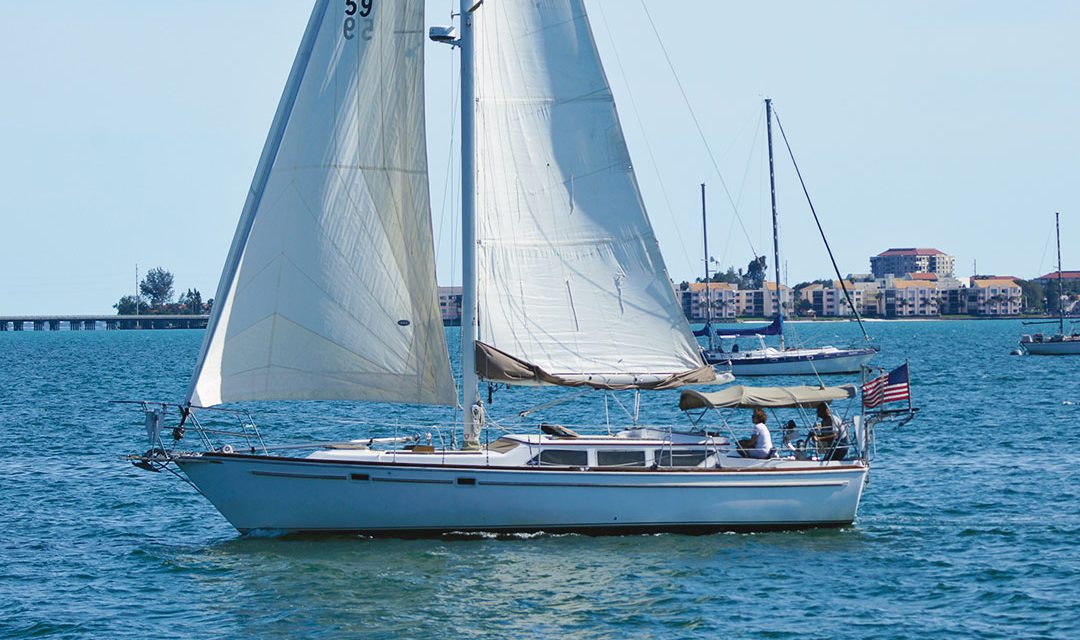
A R aised-Saloon Cruiser for Two
F or 14 years, Rosie and Carl Anderson sailed their Bombay Clipper 31 throughout the coastal waters of western Florida. But after an extended trip from Florida to Maine and back, their cruising dreams grew. To fulfill them, they realized they needed a larger boat, one designed with a cruising couple in mind. They chose a Gulfstar 39 Sailmaster, naming her The Glass Slipper , with an eye toward the boat’s unusual, innovative interior layout and easy sailhandling.
After leaving Columbia Yachts, Vince Lazzara spent the next several years of his non-compete agreement building fiberglass houseboats under the company name of Sea Rover. Once the agreement expired, he sold Sea Rover and established Gulfstar Yachts in the Tampa Bay area. His initial offerings were low-priced, lower-quality boats. This changed after contracting Ted Hood to design a number of models. Quality improved dramatically, and the product line expanded to include motorsailers. In the mid-1980s, Vince’s sons, Richard and Brad, joined the company. Though they tended to gravitate toward powerboats, Richard taught himself yacht design and drew the lines of the 39 Sailmaster. Over a production run from 1981 to 1984, the company produced 60 hulls; The Glass Slipper is hull 59. Around 1987, Gulfstar ceased production of sailboats and merged with Viking Yachts, a powerboat manufacturer.
Design and Construction
The most noticeable feature of the Gulfstar 39 Sailmaster’s distinguished profile is its raised saloon. The boat’s bow is sharp, the transom almost plumb, and its sheer very flat. Overall, the lines are clean and sleek. The interior is sometimes referred to as a single-stateroom design or a galley-forward design. Both descriptions are accurate and somewhat unusual for a beamy 39-footer.
Gulfstar built the 39 Sailmaster in two versions. The Mark I has a deep cockpit locker on the port side and a spirits locker on the starboard side, just aft of the head compartment. The Mark II replaced the port-side deep locker with a shallow locker and a quarter berth below and swapped the spirits locker for a hanging locker.
Construction of the Gulfstar 39 Sailmaster is strong and of high quality. The deck and hull are fiberglass and polyester laminates. The deck and topsides are cored with end-grain balsa, adding stiffness while reducing weight. Below the waterline, the hull is solid fiberglass. (Many boats built in the 1980s experienced blisters, and Gulfstars were not immune. It’s wise to carefully check this when buying one.)
On deck, the non-skid is molded-in, and all exterior wood—including eyebrows, handrails, toerails, companionway doors, and cockpit coaming tops—are solid teak. The hull-to-deck joint is an overlapping design commonly known as a shoebox joint.
The interior is stick-built and utilizes a longitudinal stringer system. The bulk of the interior is marine-grade plywood veneered with teak and finished with gloss varnish. Areas not finished in teak are paneled with an off-white laminate. The overhead is off-white vinyl, the sole is teak and holly, and the doors are raised panels of solid teak.
Joinery rivals that of the most expensive yachts. Gulfstar even held a patent for a special process for cambering the corners on interior woodwork.
Hardware is above average quality. All ports and hatches are aluminum, seacocks are bronze, and the ballast is lead and encapsulated.
Beginning at the stem is a teak anchor platform followed by a pair of 12-inch open-throat cleats, chocks, and a windlass. The open foredeck allows a pragmatic, uncluttered working platform for sail changes, anchoring, and mooring. There’s even enough room here to stow a dinghy.
Just aft of the cabin trunk’s rise is a 24 x 24-inch centerline hatch. Following aft are port and starboard 63-inch teak handrails. Next is a pair of stainless steel cowl vents mounted on top of teak Dorade boxes. In the topsides below this area are four opening portlights, two per side. Just before the doghouse over the raised saloon is the keel-stepped mast.
On top of the raised saloon’s doghouse is a pair of 12 x 17-inch hatches, twin 76-inch teak handrails, the mainsheet traveler, and a sea hood over the companionway. The doghouse is fitted with six large, fixed portlights, three per side, plus a pair of large forward-facing fixed portlights.
For security, stainless steel bow and stern pulpits are connected by dual lifelines. The sidedecks are 18 inches wide and rimmed with a 3-inch-high teak toerail. Port and starboard 10-inch, open-throat cleats are mounted amidships. To protect the topsides, 8 inches below the deck is a teak rubrail capped with a stainless steel strip.

The roomy cockpit is 7 feet long with slightly sloping coamings and a 3-foot-wide footwell. A 16-inch-deep by 16-inch-high bridge deck deflects most water coming over the deck, and four 2-inch drains, one in each corner of the footwell, disperse any water that does make it into the cockpit. Stowage consists of a dedicated propane locker beneath the helmsman’s seat and a pair of cockpit seat lockers. With a quarter berth beneath (on the Mark II), the port locker is shallow. The deep starboard locker affords access to the boat’s batteries and engine. In addition to the helm pedestal, there’s a centerline swim ladder and a pair of 10-inch cleats.
While the Gulfstar 39 Sailmaster’s interior at first seems typical, once below its novel arrangement becomes quite apparent. The boat’s forward sections—V-berth, head, and galley—are lower than the main saloon. The forward galley is unusual, and the raised saloon, coupled with large side- and forward-facing windows, makes for a light and spacious-feeling interior.
According to Carl, the boat features several factory options, to which he recently added $25,000 in interior and system upgrades, including new refrigeration, air conditioning, battery charger, starter, batteries, and refinishing all the interior woodwork.
Just aft of the divided chain locker in the forepeak is a roomy V-berth, 7 feet long and 61⁄2 feet at its widest. Outboard and above are fiddled shelves. Aft and to port, a his-and-hers hanging locker is topped with a bureau, and to starboard is a complementing four-drawer chest with bureau top. The 30-gallon plastic holding tank, plus three stowage drawers, are beneath the berth. Port and starboard opening portlights, the large overhead hatch, and a Dorade vent provide natural light and ventilation. From this stateroom, one door leads to the head compartment and another opens to the remainder of the interior.
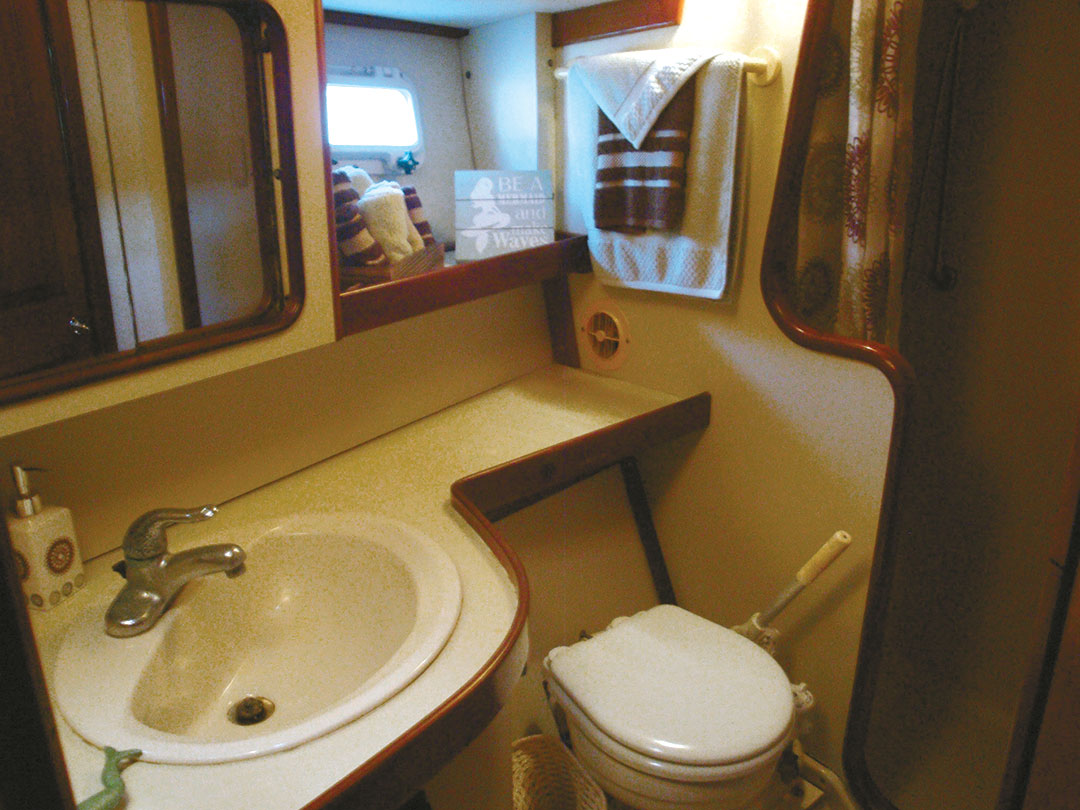
Just aft and to starboard is the head compartment whose most notable feature is a one-piece fiberglass shower stall with integrated seat.
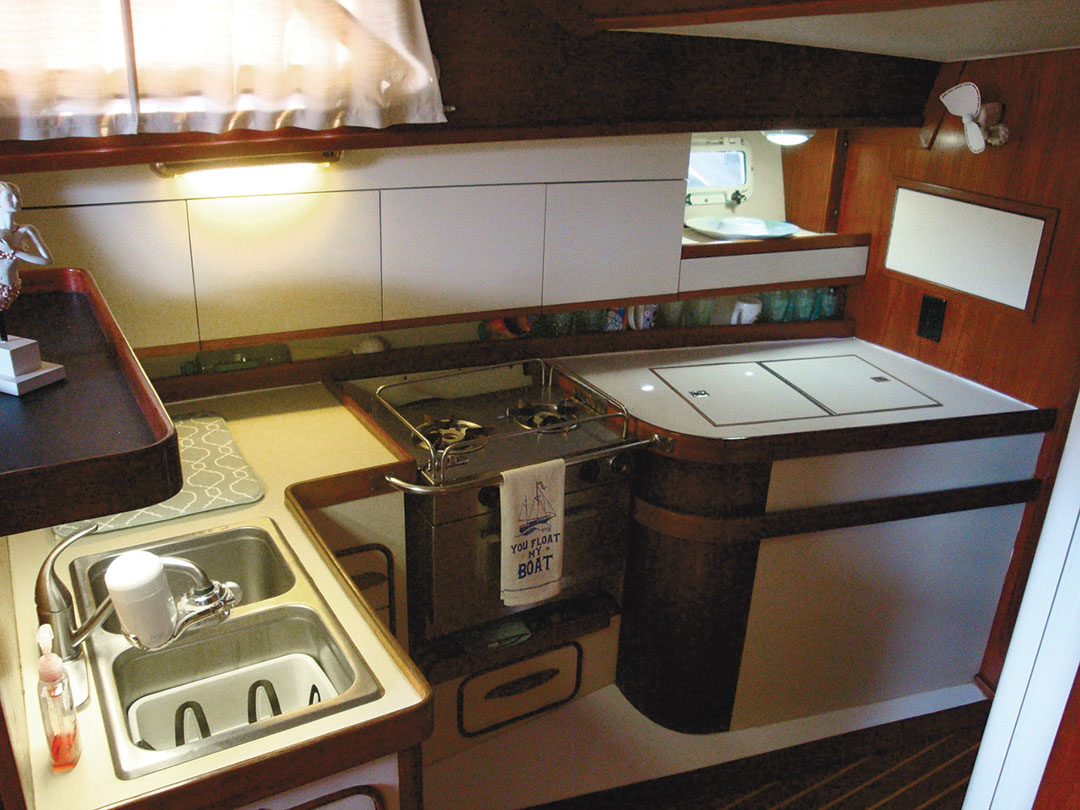
Aft to port, basically across from the head, is the roomy galley, which includes a deep, double, stainless steel sink, a top-loading icebox, and a pass-over counter that lets the chef hand food and drink directly to those in the saloon.
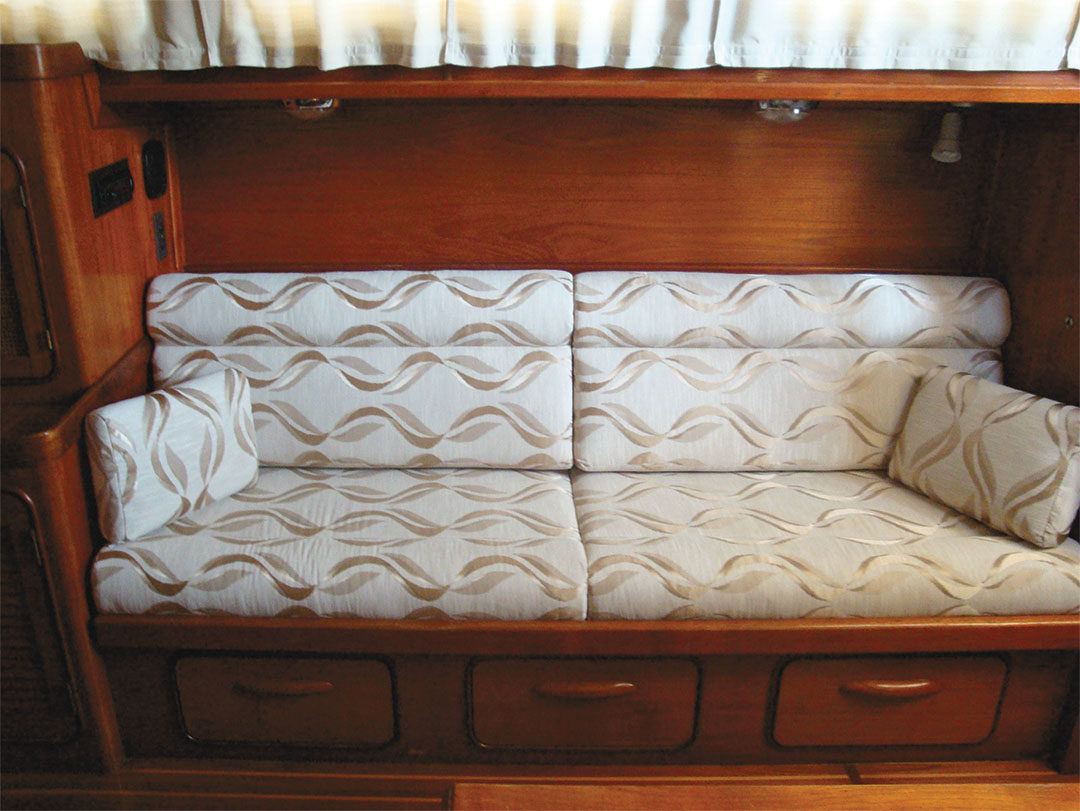
On The Glass Slipper , the outboard cabinets are a custom factory option. Stowage is abundant in numerous shelves, drawers, and cubbies, and a clever in-the-sole compartment sits in the step-up to the saloon. At waist height there’s a novel grab rail/towel rack. A single opening portlight serves this area.
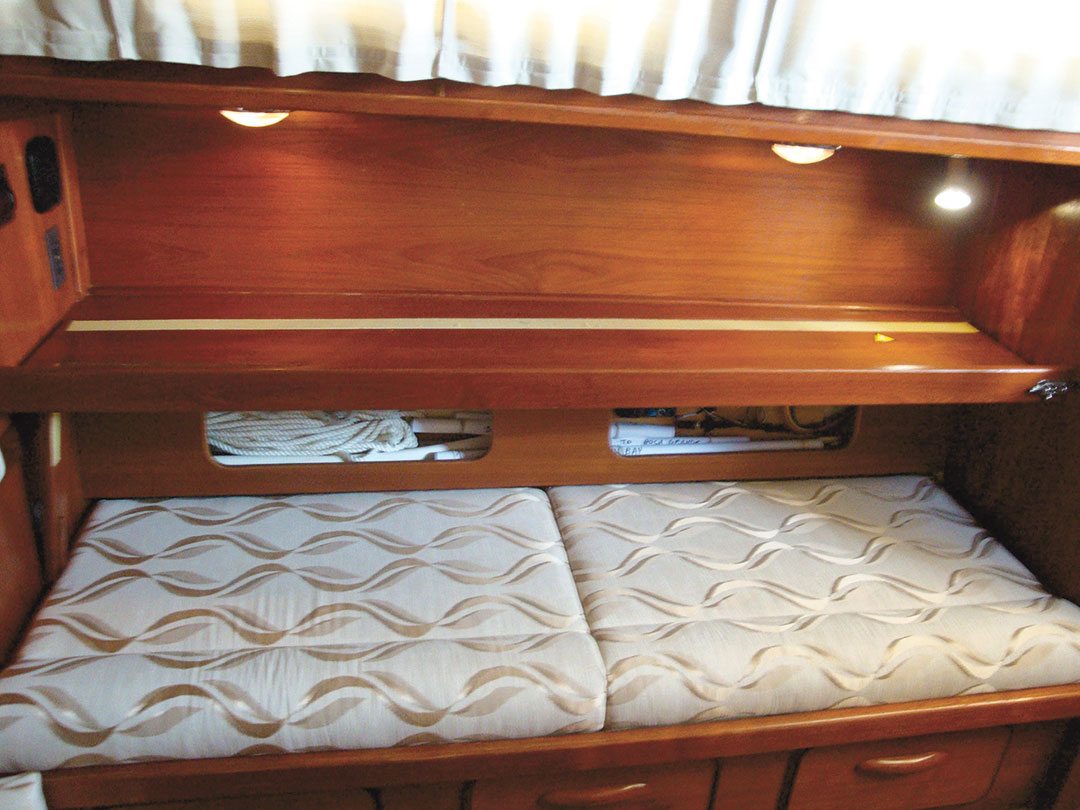
The main portion of the saloon is comprised of an L-shaped settee/berth to port and a straight settee/berth to starboard. Both settees measure 61⁄2 feet and can be converted to cozy doubles. Both have stowage beneath and behind as well as bookshelves above. In addition to the shelves above the port settee there’s also a cane-fronted cabinet.
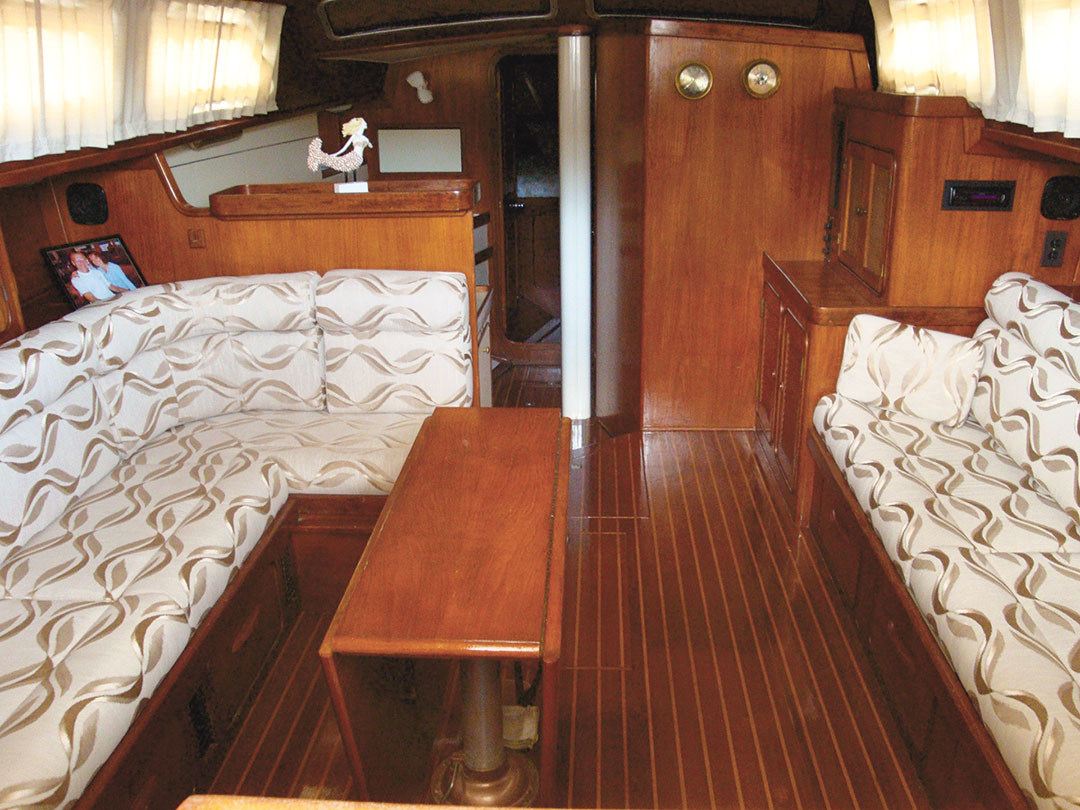
The eight large, fixed portlights and two overhead hatches create a bright and airy cabin. However, leaking in these portlights is one of the most common complaints among this design’s owners. It’s recommended to rebed them before leaks damage the interior teak.
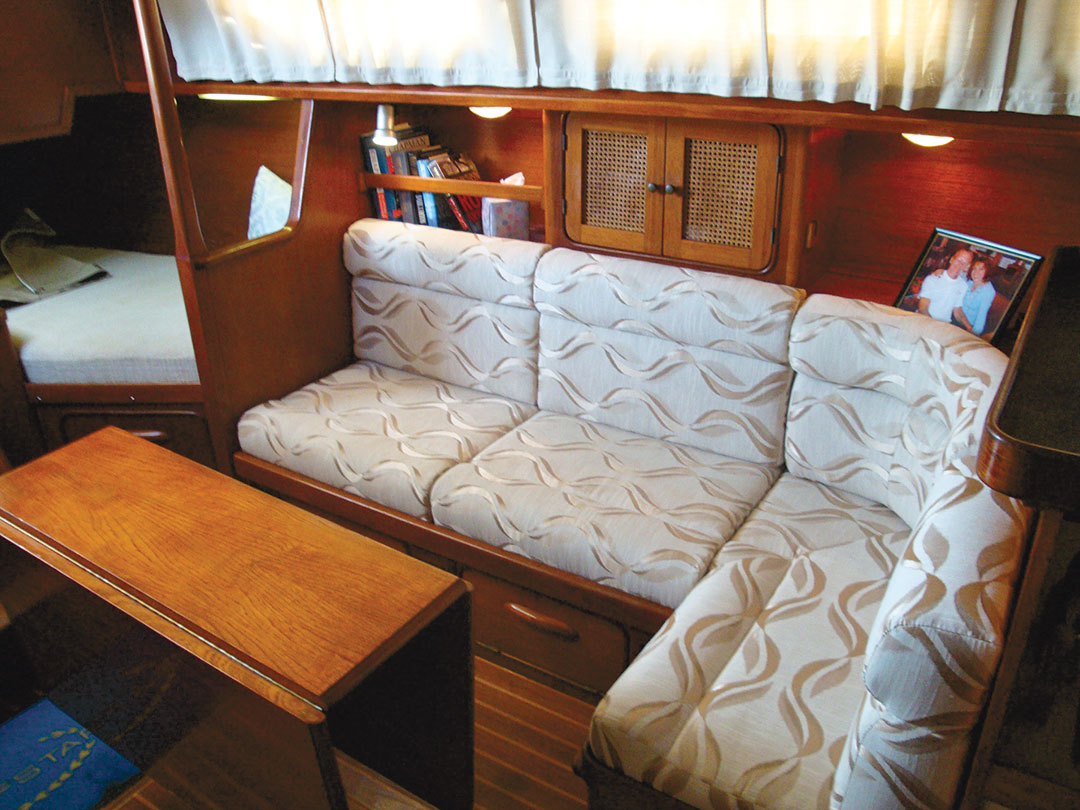
Numerous LED lights, both task and accent, provide illumination throughout the boat.

On the port side of the Mark II, across from the nav station to starboard, is a quarter berth. Beneath is stowage as well as the water heater. Access to the engine can be gained here by removing an inside panel.
Six individual panels in the sole provide access to various bilge features, including the 80-gallon aluminum fuel tank and the 150-gallon plastic water tank, located above the ballast.
The Gulfstar 39 Sailmaster’s rig is simple and straightforward. The keel-stepped mast, with outboard chainplates and boom, are aluminum extrusions painted white with polyurethane. The single pair of spreaders is tapered, and all standing rigging is stainless steel wire. Supporting the mast are a pair of cap shrouds, dual pair of lowers, and a split backstay. There’s also a topping lift.
All running rigging is double-braid polyester line. The halyards are sheaved internally and terminate at a pair of Barient #21 winches and horn cleats mounted on the mast. The mainsail is sheeted mid-boom and leads through a traveler situated forward of the companionway, terminating at a Barient #21 winch and cleat. On the underside of the boom, just aft of the gooseneck, is a single Barient #8P and a pair of line stoppers for two reefing lines.
The headsail sheets are led aft through cars and 12-foot tracks mounted on top of the toerails. These sheets terminate at Barient #28 winches on the cockpit coamings. Mounted onto the starboard track is a stainless steel folding boarding ladder.
The boat has a long fin keel, which affords the kind of tracking and stability commonly attributed to a full keel but without as much drag-inducing wetted surface area. Its rudder skeg provides excellent directional stability and keeps the rudder from stalling at extreme angles.
The outboard chainplates affect the boat’s upwind abilities by limiting sheeting angles, but this boat is designed for cruising first and foremost, not necessarily performance to weather. It can carry its full complement of sails up to about 20 knots or so before calling for a reef. The boat’s best point of sail is a reach, and the helm balances well.

The boat’s auxiliary is a 50-horsepower Perkins 4-108 diesel with a Velvet Drive transmission connected to its propeller via a V-drive. This drive train is more than adequate to punch through a tough sea.
The Glass Slipper suffered from leaking at the rudder shaft seal. The fiberglass housing around the shaft is too short, and depending upon angle of heel, this design mistake allows water to enter the boat. Carl heightened the housing and eliminated the leak.
The Gulfstream 39 Sailmaster is a unique and comfortable sailboat that can be sailed or comfortably cruised by two people. She’s well built, well laid-out, wonderfully appointed, and sails well. Her styling is not dated, and with 60 hulls built, there’s a good chance that a couple are on the market at any given time. Expect to pay $50,000-$80,000 for a good one.
Comments from Owners of the Gulfstar 39 Sailmaster
A dream to sail. It’s not a great race boat, but it is heavy like a bluewater boat. Overbuilt to the extreme. The construction was top-notch. We did have some blisters and a soft spot on the deck that was due to the leaky windows. Look at the inside wood. Make sure the windows have not leaked and ruined it. I wish there was a second bunk. The water tanks and fuel tanks most likely need to be opened and cleaned. We added a Racor filter. The water tank screws go lefty-tighty, righty-loosey. No idea why they did that, as this is a horrible way to do things.
— Derek Fronabarger
Annapolis, Maryland
Excellent all around. Sails well on all points, especially in heavy weather. Stable, hardens up. Fine also in light air. Top-quality hardware and wood workmanship. What I like most: open, roomy galley and saloon. Nice size head with walk-in shower. Small but adequate V-berth. Nice size cockpit. Large water tanks. What I like least: hull fiberglass layup issues—water saturation. Inadequate fridge insulation. Difficult to go astern.
— Robert Olshan
Lottsburg, Virginia
She sails like a dream! Responsive, well-balanced. In 10- to 15-knot winds we can put out the genoa alone and average 6-6.5 knots for an easy sail. The mainsail is heavy and takes some effort raising. The boat is solidly constructed and our bilge is dry. The interior craftsmanship on the wood detail is fabulous. She is very spacious and open feeling. We had a party where 12 friends were dancing in the saloon! The Garhauer tackle is top-notch. The top three things we like most: her design/look/line; the spacious layout on the interior; and most importantly, the quality of the build. Least: storage is limited; the windows leak, and the aluminum frames are etched from the elements; the windows are big for being at sea. The aluminum rubrail was streaking the hull. We removed the stainless steel trim on top to uncover a thin, disintegrating sheet of plastic between the stainless steel trim and aluminum rubrail. The two dissimilar metals were reacting. The aluminum rubrail was pitted so badly we removed it. The blackwater holding tank is under the bed—holding tanks do permeate! We had two through hulls replaced for the cockpit/deck drains. At 36 years old, they were scary thin. Access underneath the cockpit is a challenge. The back of the electrical panel is in the starboard lazarette. All of the wiring is uncovered. Our rudder shoe is rusting from age.
— Krissy Nichols
San Diego, California
Great sailing quality, easy helm, comfortable interior with adequate storage, roomy V-berth and head with separate, large shower stall. Good ventilation with hatches and opening ports. The large portlights leaked when the boat was sailed hard, and space behind the steering wheel was tight. Specific problems: the V-drive was on top of the stuffing box with little room to service; the raw water pump was difficult to service with the engine facing aft; and the rudder post leaked seawater into the bilge and lazarette. Check the rudder post for leaks, 108 Perkins diesels are known to have a problem with rear seal leaks, and check the V-drive for oil leaks.
— William Misenheimer
Fort Myers, Florida
The main reasons we chose the Gulfstar Sailmaster 39 over 30 years ago are how it performs and how it is laid out. The forward galley has been perfect for us since we don’t do much cooking “at sea” and it allows for a very open saloon. We had a full blister repair with epoxy coat in ’87. Another issue for us was chainplate leaks, which got into the deck core because the core had not been cut away far enough and glassed, surrounding the chainplate penetration slot.
— Cameron Foster
Bainbridge Island, Washington
About The Author

Gregg Nestor
Gregg Nestor is a contributing editor with Good Old Boat. He has authored four books on sailing: Twenty Affordable Sailboats to Take You Anywhere, Twenty Comfortable Sailboats to Take You Cruising, The Trailer Sailer Owner's Manual, and All Hands on Deck. He became a snowbird a few years back, after relocating his boat from the Great Lakes to Florida.
Related Posts
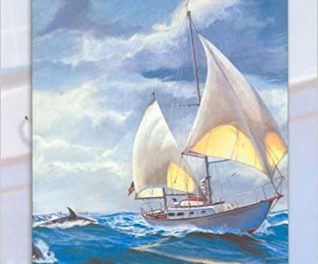
She’ll Cross an Ocean, If You Will: Book Review
October 1, 2004
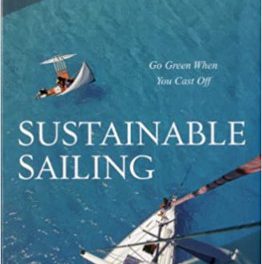
Sustainable Sailing: Go Green When You Cast Off
April 1, 2010
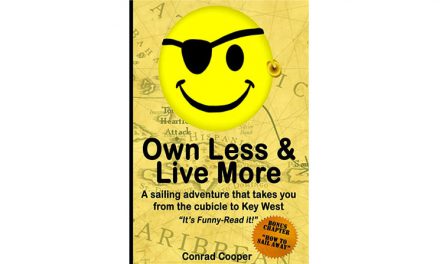
Own Less & Live More: Book Review
June 1, 2015
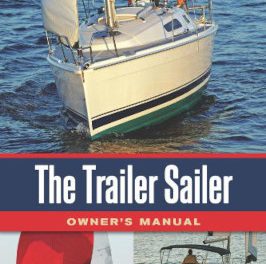
The Trailer Sailer: Book Review
October 1, 2009
Current Edition
Join Our Mailing List
Get the best sailing news, boat project how-tos and more delivered to your inbox.
You have Successfully Subscribed!

- Forum Listing
- Marketplace
- Advanced Search
- About The Boat
- Boat Review Forum
- SailNet is a forum community dedicated to Sailing enthusiasts. Come join the discussion about sailing, modifications, classifieds, troubleshooting, repairs, reviews, maintenance, and more!
Gulfstar Sailmaster 39
- Add to quote
I am currently interested in one of these boats but it is difficult to find any good information about them. I wonder if someone can tell me something about this Gulfstar. I am particularly interested in such aspects like seaworthiness, sea motion, quality of craftsmanship, offshore capabilities. I will greatly appreciate all info from people who has owned or sailed these boats.
Gulfstar 39 I'm a noob to sailing and this subject caught my eye. My friend owns a 1970 something Gulfstar 50' and LOVES it. He suggested I search the brand and I saw this post. I'm interested in any info on this boat as well. If I find anything of interest, I will post here. Thanks!
I have a friend who loves his and another friend who has one with the worst osmosis I have ever seen. I think it depends on which production run the boat was part of! Phil
Inspection Being a noob, I don't know squat - but I think that most problems would be uncovered by a thorough inspection by a pro - hopefully osmosis would be evident? My friend has lived on his Gulfstar 50' for TWENTY years and has put a lot of ocean under its keel. He's crossing "the big pond" soon and won't return for a long time, if ever - but if I can locate a decent, local specimen soon, he'll help me do the initial inspection.
I was looking at a 42 foot in Massachusetts that was gorgeous. Apparently, you need to be careful with the early 70's boats with quality issues. there were a lot of cost cutting short cuts. Once they got their act together, the boats were great. They are a pretty good bang for buck if you are buying a good year/model Gulfstar Yachts Review: A Complicated History Filed under: Reviews — Tags: Caribbean Sailing Yachts (CSY), Columbia Yachts, Gulfstar Yachts, Vincent Lazzara — Richard Jordan @ 1:32 pm Gulfstar Early Model Star Logo Gulfstar Yachts was founded in 1970 by Vincent Lazzara in Tampa Bay, Florida. Mr. Lazzara was fresh off a two year forced absence from the power and sailboat building business. As part of selling his share in Columbia Yachts, he signed a non-compete clause and boded his time building houseboats. In 1970, Mr. Lazzara was already a legendary figure who had invented a snap-shackle variation, helped build one of the first fiberglass sailboats in the Rhodes designed Bounty II, and was involved with Columbia Yachts which was one of the leading early builders of fiberglass sailboats. But, his greatest legacy was to be Gulfstar Yachts. The Gulfstar Story Mr. Lazzara drawing on his experience decided to produce sailboat hulls that could double as trawlers. With a different deck mold and larger engine, Gulfstar delivered 53 and 36-foot trawlers while by stepping a mast, they had 53 and 36 motorsailers. He tapped into the floating condominium mentality of the public and built exactly what would sell. The sailboats had great accommodation but poor performance with their shoal draft, short rigs, and wide beam. Other boats produced during this era include a 43 trawler and 44 motorsailer. While Mr. Lazzara was experienced in boat building, his crew at the Tampa Bay factory were not. In the early Gulfstar years, the workmanship bordered on criminal. Some choices were made to save money and produce boats inexpensively. The interiors were full of Formica. The ballast was iron in concrete slurry. But other problems had less to do with philosophy and more to do with poor practices. The balsa cored decks did not have solid radii of glass around deck hardware and were not sealed with resin either. They did not use backing plates for cleats. Workmen according to a former yard hand would carelessly cut holes in the deck and leave unfinished hulls out in the rain. Gulfstars still to this day cannot shake the poor quality reputation from their mistakes made in the early 1970′s. Around 1975, Mr. Lazzara felt that consumer tastes were changing. Instead of beamy motorsailers, high performance yachts were coming into vogue. Gulfstar would have to evolve. They introduced a 50-foot high performance sailboat that would become one of their most famous designs, the Gulfstar 50. It was an era of evolution where they shifted from iron to lead ballast and Formica to classic dark teak interiors. They even changed their logo from a star to a wreath. Gulfstar Late Model Wreath Logo By 1978, the workmanship had significantly improved. They patented a process and developed a special plywood to camber edges. All the bulkheads they nicely laminated, all the corners nicely radiused. The joinery work would slowly rival the best in the industry. They did not go completely away from motorsailers and still produced some poor performing shoal draft, short rig, beamy motorsailers like the Gulfstar 47 Sailmaster series. But all their models in the late 1970′s had much better quality construction than the early 1970′s versions. 1979 Gulfstar 47 Sailmaster Gulfstar Yachts and all builders during this era had to grapple with the oil embargo and low supply of resin. To save resin, Mr. Lazzara used a 50% glass to resin ratio which was unheard of in those days. These days this ratio is standard as we have found out that the glass not resin rich laminate holds the strength. Despite this innovation, the discovery came along with serious growing pains, and many Gulfstars of this era have had blister problems. Whether due to their fluctuating resin ratios, the chopper gun, or the lack of vinylester resins, Gulfstars in this era until the mid 1980′s have a history of blister problems. In the late 1970′s and early 1980′s, Vincent Lazzara’s two sons became involved in the company. R.C. Lazzara started designing the Gulfstar yachts of this era. By the 1980′s, the workmanship was as good or better than any other manufacturer out there. They continued to produce fine teak interiors and performance oriented sailboats such as the Gulfstar 44 and Gulfstar 60 designs. Along with these sailboats, they produced displacement motor yachts such as the 44 and 48 designs. As they progressed into the mid 1980′s, their production shifted towards powerboats and away from the performance sailboats. The sons were more power boat guys. Maybe the height of their sailboat skill is the 54 Sail Cruiser whose stunning interior joiner work, soft ride, and quality construction is about the opposite of Gulfstar’s early days. In the late 1980′s, Gulfstar moved mostly to motor yachts. They still produced some interesting sailboats including some for the CSY charter fleet such as the 50, 45 Hirsch, and 42. They for years discussed a merger with Vikings Yachts, a power boat builder. Finally in 1990, Gulfstar sold its assets to Viking Yachts. The sons moved onto found Lazzara Yachts, a current mega-yacht builder in the Tampa Bay area.
shamrock, as a potential Gulfstar owner, I really appreciate your post!
Thanks for quoting my article. I don't know much about Gulfstar than is common knowledge but feel free to ask for clarification about what i shared. Love these yachts and am trying to contribute what I know.
web page Some info on my web page: Boat Model - Gulfstar Sailboats
- ?
- 174.5K members
Top Contributors this Month
GULFSTAR 41 Detailed Review
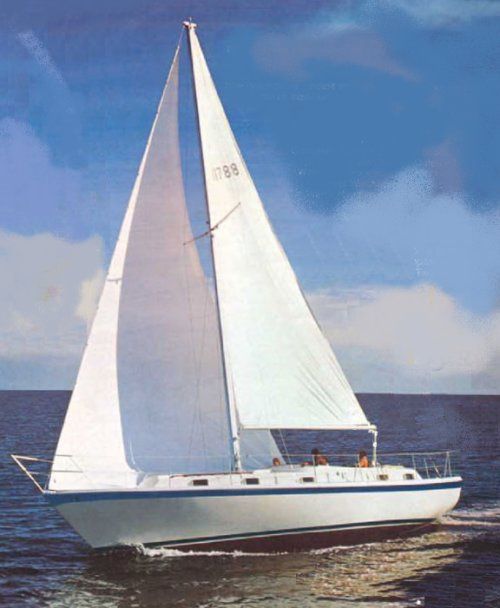
If you are a boat enthusiast looking to get more information on specs, built, make, etc. of different boats, then here is a complete review of GULFSTAR 41. Built by Gulfstar Yachts and designed by Vince & Richard Lazarra, the boat was first built in 1973. It has a hull type of Fin with rudder on skeg and LOA is 12.5. Its sail area/displacement ratio 14.14. Its auxiliary power tank, manufactured by Perkins, runs on Diesel.
GULFSTAR 41 has retained its value as a result of superior building, a solid reputation, and a devoted owner base. Read on to find out more about GULFSTAR 41 and decide if it is a fit for your boating needs.
Boat Information
Boat specifications, sail boat calculation, rig and sail specs, auxillary power tank, accomodations, contributions, who designed the gulfstar 41.
GULFSTAR 41 was designed by Vince & Richard Lazarra.
Who builds GULFSTAR 41?
GULFSTAR 41 is built by Gulfstar Yachts.
When was GULFSTAR 41 first built?
GULFSTAR 41 was first built in 1973.
How long is GULFSTAR 41?
GULFSTAR 41 is 10.06 m in length.
What is mast height on GULFSTAR 41?
GULFSTAR 41 has a mast height of 11.68 m.
Member Boats at HarborMoor
The city made him hide his boat — so he had it painted on his fence
“I’ll do what they want, but I’m not going to do it their way.”

When the city of Seaside, Calif., ordered resident Etienne Constable to build a fence to cover the boat parked in his driveway, he complied. But the puckish way he did it — hiring his artist neighbor to paint a realistic mural of the same exact boat on his fence — has brought him viral attention.
“We kind of hit the sweet spot between following the rules and making an elegant statement to the contrary,” says Constable.
Constable, who works in business development, has lived in the same house in Seaside for 29 years. For most of that time, his boat trailer — often with a boat attached — has sat in his driveway without issue. But in July 2023, he received a letter from the city, asserting that the municipal code requires that boats and trailers be “screened on the side and front by a six-foot-high fence,” and threatening him with a citation and a $100 fine if he failed to comply. (The Washington Post has reviewed the letter.)
To Constable, the letter came out of nowhere. The ordinance itself is not new. He hadn’t heard any complaints from neighbors, and he’s kept the boat, which he named Might as Well and uses to fish “as often as I can,” for four years in his driveway.
“I thought, ‘This is ridiculous,’ and my first reaction was to leave a nasty, nasty message at the city hall,” he says. “And then I thought, well, I might as well build a screen … I’ll do what they want, but I’m not going to do it their way.”
So he started brainstorming. That’s when he had a chat with his neighbor, Hanif Panni, a muralist and graphic artist, about potentially painting the fence to look exactly like the space it was built to cover up. The two batted ideas back and forth over the fence that separated their yards. “We wanted to make an illusion,” says Panni.
Panni, whose artist name is Hanif Wondir , was in. He had other projects on his docket, and wasn’t able to start painting the boat on the fence until early May. It took four days to complete. As he worked, people driving or walking by would stop to comment on the optical illusion, and a few neighbors told him that they, too, had received letters about the ordinance, says Panni.
The actual fence cost a few hundred bucks, per Constable, who did the labor himself. He paid Panni for painting the mural, too.
With Constable’s permission, Panni shared the finished work on social media. It quickly went viral.
“The more people see something, the more opinions there are about it … and it’s just so fun to see those branches stemming off of something that I created,” says Panni. “ … One of the reasons why I do public art, and art in general, is to inspire those conversations.”
The mural ultimately led to an approving phone call to Constable from Nick Borges, Seaside’s acting city manager, on Friday evening. Borges first saw the images of the painted fence when a friend sent them to him — neither of them knew the photos were taken in Seaside. “I thought, ‘wow, that’s pretty creative.’ I laughed at it, and then I started getting calls from local media,” says Borges.
After years of complaints that the city was too lax about code enforcement, Borges says Seaside hired someone to enforce its codes, hence the letters sent to residents. Constable’s case was closed out in November, when the fence (at that point, without the mural) was spotted, says Borges.
“We’re not taking any action,” he says. “The only action I’m going to take is a high five, and that’s it.”
This story has been updated with comment from Seaside’s acting city manager Nick Borges.
More from The Home You Own
The Home You Own is here to help you make sense of the home you live in.
DIYs you can actually do yourself: Don’t be intimidated by those home projects. Consider which renovations add the most value to your home (including the kitchen and bathroom ), what you can actually get done in a weekend , and everything in between.
Your home + climate change: Whether you’re trying to prepare your home for an electric vehicle or want to start composting , we’re here to help you live more sustainably .
Plants and pets: Your furry friends and greenery add more life to your spaces. For your green thumb, find tips for saving money on houseplants and how to keep your plants alive longer. Pets can make a house a home, but stopping your cats from scratching the furniture isn’t always easy.
Keeping your home clean and organized: We breakdown the essential cleaning supplies you need, and point out the 11 germy spots that are often overlooked. Plus, hear hacks from professional organizers on maximizing counter space ,
Maintaining your home: Necessary home maintenance can save your thousands in the long run. From gutter cleaning and preparing your fireplace for winter, to what to do if your basement floods .
Contact us: Looking to buy your first home? Do you have questions about home improvement or homeownership? We’re here to help with your next home project.

Music | Review: Meet the most underrated band in Bay…
Share this:.
- Click to share on Facebook (Opens in new window)
- Click to share on Twitter (Opens in new window)
- Click to print (Opens in new window)
- Click to email a link to a friend (Opens in new window)
- Click to share on Reddit (Opens in new window)
Today's e-Edition
Things To Do
- Food & Drink
- Celebrities
- Pets & Animals
- Event Calendar
Breaking News
Music | jung hoo lee leaves injured in 1st inning as sf giants can’t catch a break, music | review: meet the most underrated band in bay area rock music history, pablo cruise is way more than just the radio hits.

Pablo Cruise is the most underrated band in Bay Area music history.
The Sausalito-born group proved to be the complete package during its approximately 90-minute set at the lovely Menlo Park venue, solidly delivering 14 songs that appealed to listeners in various ways. There were the concise, hook-driven hits as well as other shiny pop-rock nuggets that should have been a.m. radio smashes back in the ’70s. There were also folksy numbers, jammed-out rockers and plenty of mesmerizing instrumental interludes.
And all of it was delivered by a band of first-rate players — founding members Cory Lerios on keyboards and David Jenkins on vocals and guitar as well as bassist Larry Antonino, drummer Sergio Gonzalez and vocalist Robbie Wyckoff.
Yet, the band rarely gets the credit for those kinds of things. Instead, many think of the group as a late ’70s flash in the pan with two, maybe three, songs you might want to hear and a career that was resurrected in large part due to Will Ferrell wearing a Pablo Cruise shirt in the 2008 comedy “Step Brothers.”
And none of that could be further from the truth (well, except for the Ferrell part). The band actually has a strong and deep songbook, built from seven albums that were released from 1975 to 1983.
Following a well-received opening set from Palo Alto bluesman AJ Crawdaddy (who once was a member of Pablo Cruise), the lights dimmed and a fun seven-minute video — covering the career arch of Pablo Cruise — was shown to the audience. (FYI: The video did touch upon the Ferrell factor.)
Then the five-piece outfit took the stage and opened with a charged-up version of “Worlds Away,” the title track to Pablo Cruise’s platinum-plus-selling fourth album from 1978. It was straight-up pop-rock joy — the kind that Journey and Toto fans would certainly appreciate — and performed with both great flare and meticulous care.
It was the first of many times in the evening when Jenkins would cause jaws to drop with his mighty guitar work. His playing, which has always provided the teeth to Pablo Cruise’s soft-rock hits and other recordings, has even more bite in concert than in the studio.

From there, the band peddled some fine yacht rock — the genre that championed smooth a.m. radio hits of the ’70s and early ’80s — as it sailed on with a pair of gorgeous ballads, “Cool Love” (from 1981’s “Reflector”) and “Raging Fire” (from 1977’s platinum-selling smash “A Place in the Sun”).
The latter was highlighted by incredible harmony vocal work and was so beautiful that it could have been a Crosby, Stills & Nash number. And if it had indeed been a CSN tune, it would have made it on their greatest hits album.
Next up was “Atlanta June,” which, believe it or not, was the original A-side to the single that gave the band it’s huge “Whatcha Gonna Do?” hit. And while that song failed to make it on the charts, it was one of the absolute highlights of this concert as it nicely showcased the powerful vocals of Wyckoff (who spent years singing with Roger Waters on tour).
Turning the calendar on “Atlanta June,” four-fifths of the band left the stage and Jenkins performed “Livin’ Inside of Your Love,” a mesmerizing solo acoustic folk-pop offering, filled with crafty and endearing lyrics, which was deeply reminiscent of the late-great John Prine. (And that’s about as big a compliment as we can give any folk-pop tune.)
Then Lerios — who grew up in Palo Alto, a stone’s throw (or so) away from the Guild — took the stage and offered up a funny counterpoint to Jenkin’s softly romantic number with his own “I Get Tired Just Thinking of You.”

Humor was a huge part of the night, as Lerios and Jenkins playfully bickered and joked throughout the evening. The person sitting next to me compared the duo to the Smothers Brothers, a reference that probably says a lot about the age of both the band and their audience.
Lerios, for example, would draw big laughs when he discussed why he split ways with Jenkins in the ’80s, leading to the band’s breakup.
“We weren’t getting along very well,” he said, before adding with solid deadpan delivery and a sideways glance at Jenkins. “We still don’t.”
There was also a fun self-effacing zinger that came during the band member introductions, after Wyckoff explained how, before he got the call to join Pablo Cruise, he used to fly in private jets around the globe while touring with Roger Waters.
“After that phone call, I had to ask Robby, ‘Have you ever flown Southwest?'” Lerios joked of Pablo Cruise’s apparent means of air travel these days.
Lerios, however, probably isn’t hurting for money one bit. After all, he went on to have a very successful career in composing for TV and film after Pablo Cruise called it quits in the ’80s. His most notable work in that realm came when he landed the gig to do the music for “Baywatch” — and, as a reminder of such to fans, the band performed that TV show’s theme during the Guild concert.
The show reached another high point with the incredible jam through “Zero to Sixty in Five,” a standout from 1976’s “Lifeline” album that thoroughly reminded us of the great instrumental numbers that the group has recorded through the years. (I actually wish the band had played more instrumental songs — especially “El Verano” from “A Place in the Sun” and the 12-minute-plus “Ocean Breeze” from the first album.)
From there, it was hit city as Pablo cruised through the favorites “Don’t Want to Live Without It,” “I Go to Rio” and, of course, the dual smashes “Love Will Find a Way” and “Whatcha Gonna Do?”
It was a superb showing by a group that should be mentioned way more frequently whenever the topic of best Bay Area bands comes up.
Pablo Cruise plays tonight (Friday, May 10) at the Mystic Theatre in Petaluma. For more information, visit pablocruise.com/shows .
1. “Worlds Away” 2. “Cool Love” 3. “Raging Fire” 4. “Atlanta June” 5. “Livin’ Inside of Your Love” 6. “I Get Tired Just Thinking of You” 7. “A Place in the Sun” 8. “Will You, Won’t You” 9. “Baywatch” theme 10. “Zero to Sixty in Five” 11. “Don’t Want to Live Without It” 12. “I Go to Rio” 13. “Love Will Find a Way” 14. “Whatcha Gonna Do?”

Pablo Cruise keyboardist Cory Lerios, left, and guitarist and vocalist, David Jenkins, perform in concert at the Guild Theatre in Menlo Park, Calif., on Thursday, May 9, 2024. (Ray Chavez/Bay Area News Group)

Pablo Cruise keyboardist Cory Lerios acknowledges fans as the band performs in concert at the Guild Theatre in Menlo Park, Calif., on Thursday, May 9, 2024. (Ray Chavez/Bay Area News Group)

Pablo Cruise performs in concert at the Guild Theatre in Menlo Park, Calif., on Thursday, May 9, 2024. (Ray Chavez/Bay Area News Group)

Pablo Cruise guitarist and vocalist, David Jenkins, performs in concert at the Guild Theatre in Menlo Park, Calif., on Thursday, May 9, 2024. (Ray Chavez/Bay Area News Group)

Pablo Cruise keyboardist Cory Lerios cheers with fans as the band performs in concert at the Guild Theatre in Menlo Park, Calif., on Thursday, May 9, 2024. (Ray Chavez/Bay Area News Group)

- Report an error
- Policies and Standards
More in Music

Music | Dutch contestant kicked out of Eurovision hours before tension-plagued song contest final

Music | Taylor Swift debuts revamped ‘Eras Tour’ setlist with ‘Tortured Poets Department’ songs

Entertainment | Justin Bieber could be starting his ‘tribe’ as Hailey displays pregnancy

Entertainment | Indigo Girls reflect on their career and impact in new documentary

IMAGES
VIDEO
COMMENTS
Gulfstar Yachts Review: A Complicated History. May 4, 2010 Richard Jordan. Gulfstar Early Model Star Logo. Gulfstar Yachts was founded in 1970 by Vincent Lazzara in Tampa Bay, Florida. Mr. Lazzara was fresh off a two year forced absence from the power and sailboat building business. As part of selling his share in Columbia Yachts, he signed a ...
In 1970, Gulfstar Yachts started off a budget builder of beamy motorsailors. Their questionable build quality included missing backing plates, open deck cores, and formica interiors. But as the years progressed, the company's quality began to rival that of Hinckley, Little Harbor, and other luxury yacht builders.
In the late 1980s, Gulfstar built mostly larger motor yachts, but the company still produced interesting sailboats, including some for the CSY charter fleet, including the 50, 45 Hirsch, and the 42. For years, Gulfstar discussed a merger with Vikings Yachts, a powerboat builder, and finally in 1990, the company was sold to Viking Yachts.
Gulfstar Yachts was a large manufacturer of fiberglass sailboats and powerboats built in the Tampa Bay, Florida area from 1970 until 1990 when the Viking Yachts purchased the company's assets. [1] Vince Lazzara, one of pioneers of fiberglass sailboat construction, founded the company. Lazzara had previously been one of the founders of Columbia ...
January 27, 2010 Gulfstar 50 Review: Affordable Three Stateroom Classic. Filed under: Reviews — Tags: Gulfstar 50, John Kretchmer, Vince Lazzara — Richard Jordan @ 1:22 pm The Gulfstar 50 is one of Lazzara's best designs. Lazzara previously was a partner at Columbia yachts who produced another well know 50-footer, the Columbia 50.
According to the Gulfstar Owner's Club, all told they produced around 60 hulls (some cite 57 hulls) of the Sailmaster 39 over the two year production run. Then using the same hull as the 39SM but with a center cockpit arrangement, Gulfstar made a dozen Moorings charter boats and branded them Gulfstar 40 Sailmasters.
The draft is only 40" so there's no excuse for running aground. This a 1976 model, with a pair of 130 HP Perkins, that was only a two owner boat and very well maintained. This one had a 7.5 Kw Onan (yeah, it still worked) and airconditioning, plus custom refrigeration and freezer. Otherwise equipage was about average.
While one normally looks to the past to search for a pedigree for a current build, you can do a 180 as well for edification: Vince, with sons Dick & Brad, built the Gulfstar trawers (yes, notable for blisters early on), then turned to motoryachts which were then built/sold, in 1990, as Vikings, one of the most far-thinking boats of their time (notable for their lack of blisters), and then ...
The most notable manifestation of this was the Gulfstar 50, a large center-cockpit cruiser first introduced in 1975. The GS 50 was the best boat Gulfstar ever built and also the most popular, with 172 hulls launched during a six-year production run that ended in 1980. Designed by Lazzara himself, the GS 50 boasts superior interior joinery ...
Gulfstar 44 is a 44′ 8″ / 13.6 m monohull sailboat designed by Vince & Richard Lazarra and built by Gulfstar Yachts between 1978 and 1984. Great choice! Your favorites are temporarily saved for this session. Sign in to save them permanently, access them on any device, and receive relevant alerts.
The most noticeable feature of the Gulfstar 39 Sailmaster's distinguished profile is its raised saloon. The boat's bow is sharp, the transom almost plumb, and its sheer very flat. Overall, the lines are clean and sleek. The interior is sometimes referred to as a single-stateroom design or a galley-forward design.
The Gulfstar 49 Motor Yacht is an evolutionary refinement of the company's 48-footer (1981-83). What really sets her apart from her predecessor, however, is the 49's fully enclosed and air-conditioned aft deck. Indeed, this enclosed aft deck is actually the main salon of the Gulfstar 49 while the mid-level deckhouse—the salon in most ...
Still a handsome yacht today in spite of her age, the Gulfstar 44 Motor Yacht enjoyed a good deal of popularity in the late 1980s. It wasn't just her modern construction and planing-speed performance that impressed buyers; indeed, it was the 44's fully enclosed and air-conditioned afterdeck—a virtual second salon with wing doors—that the boating public found so remarkable.
GULFSTAR 44 Detailed Review. If you are a boat enthusiast looking to get more information on specs, built, make, etc. of different boats, then here is a complete review of GULFSTAR 44. Built by Gulfstar Yachts and designed by Vince & Richard Lazarra, the boat was first built in 1978. It has a hull type of Fin with rudder on skeg and LOA is 13.62.
Gulfstar Yachts Review: A Complicated History Filed under: Reviews — Tags: Caribbean Sailing Yachts (CSY), Columbia Yachts, Gulfstar Yachts, Vincent Lazzara — Richard Jordan @ 1:32 pm Gulfstar Early Model Star Logo Gulfstar Yachts was founded in 1970 by Vincent Lazzara in Tampa Bay, Florida. Mr.
I delivered a Gulfstar 41 across the Atlantic. The boat itself seemed to be very solidly built,the owner had not done any maintinence in 25 years. The boat didn't point worth a damn unless the engine was assisting (then it sailed very well). I wouldn't own one !
GULFSTAR 41 Detailed Review. If you are a boat enthusiast looking to get more information on specs, built, make, etc. of different boats, then here is a complete review of GULFSTAR 41. Built by Gulfstar Yachts and designed by Vince & Richard Lazarra, the boat was first built in 1973. It has a hull type of Fin with rudder on skeg and LOA is 12.5.
Gulfstar. Gulfstar is a yacht manufacturer that currently has 34 yachts for sale on YachtWorld, including 1 new vessels and 33 used yachts, listed by experienced boat and yacht brokers mainly in the following countries: United States, Mexico, United Kingdom, Guatemala and Panama. The selection of models featured on YachtWorld spans a spectrum ...
Hear a lot of bad stuff about '74-'75 Gulfstar 44 Motorsailers, including one Jordan Yacht review stating that they should not be taken offshore. Also, there are concerns about the 4,500/22,500 (0.2) ballast/displacement ratio. Have looked at one that has been a live-aboard for the past 10+ years and cruised in the ICW and blue water extensively.
3 min. When the city of Seaside, Calif., ordered resident Etienne Constable to build a fence to cover the boat parked in his driveway, he complied. But the puckish way he did it — hiring his ...
Pablo Cruise is the most underrated band in Bay Area music history. The Sausalito-born group proved to be the complete package during its approximately 90-minute set at the lovely Menlo Park venue ...